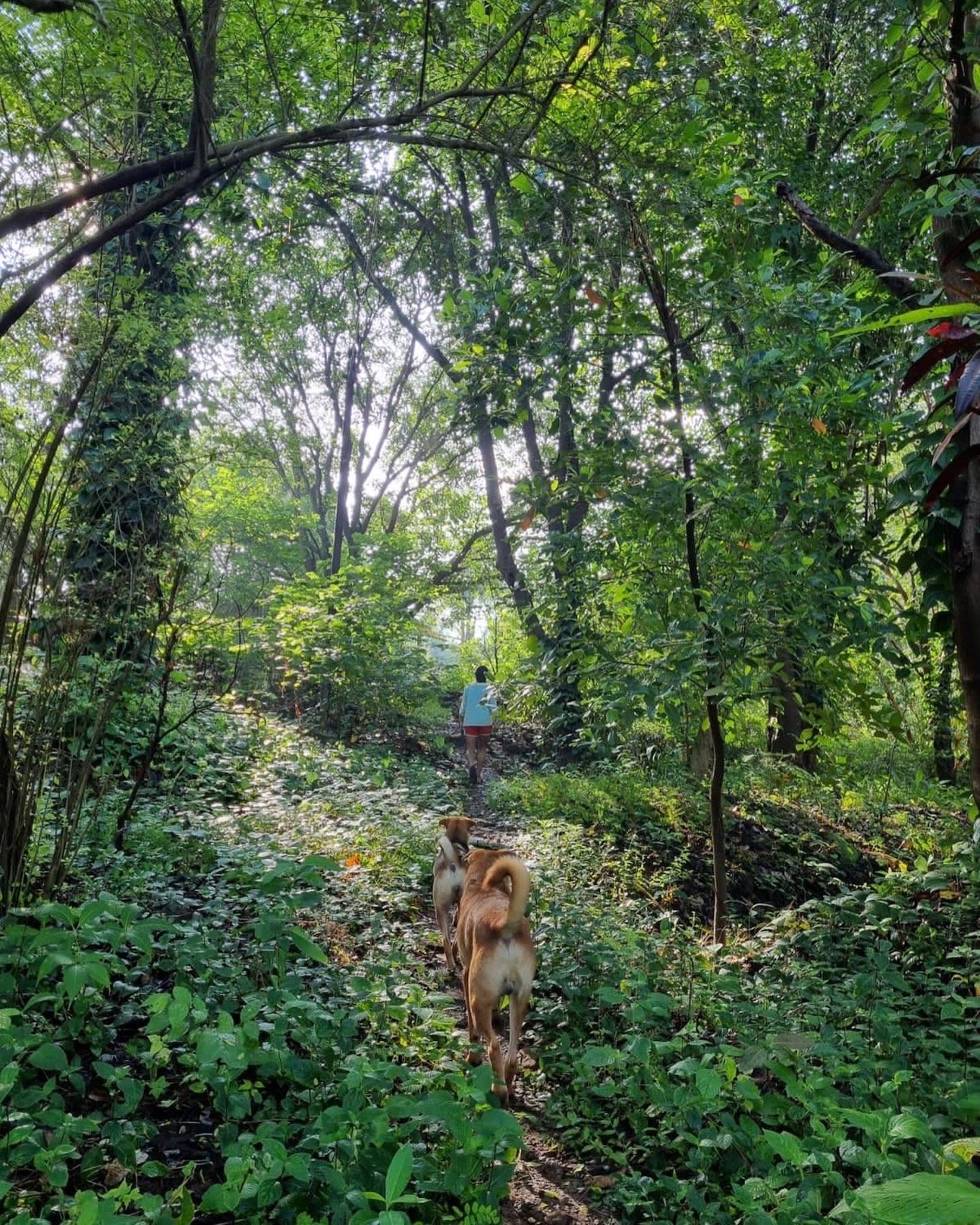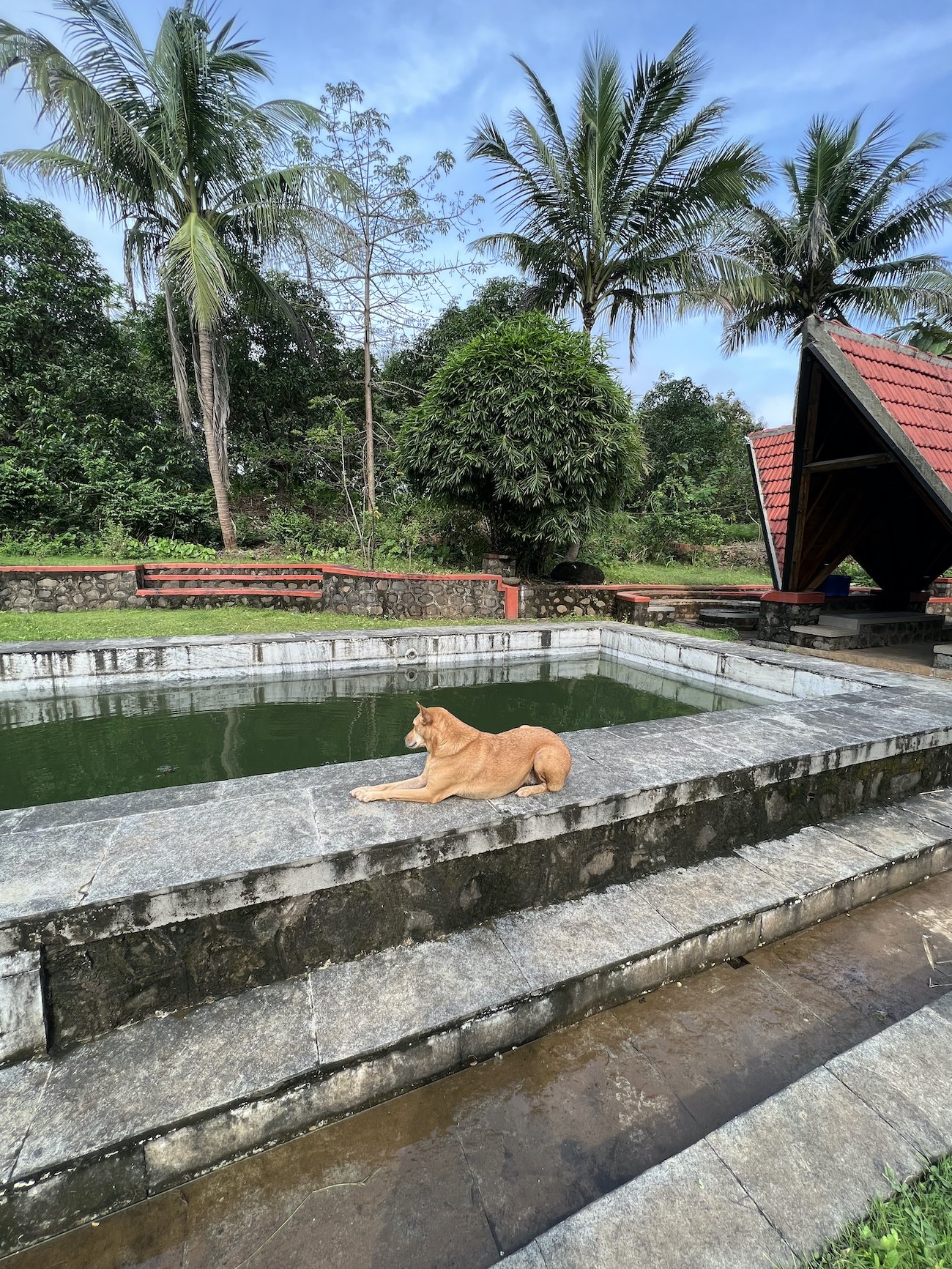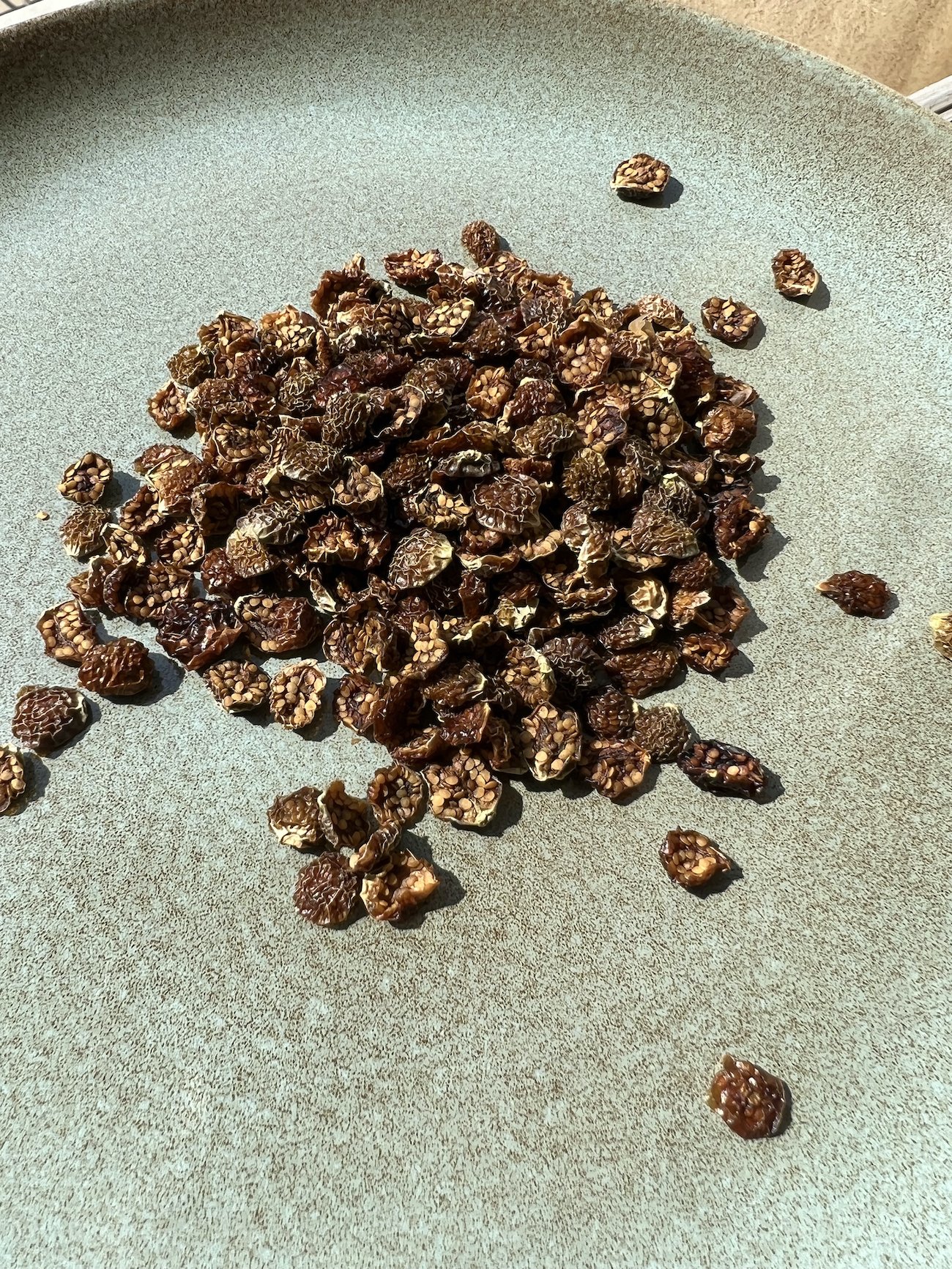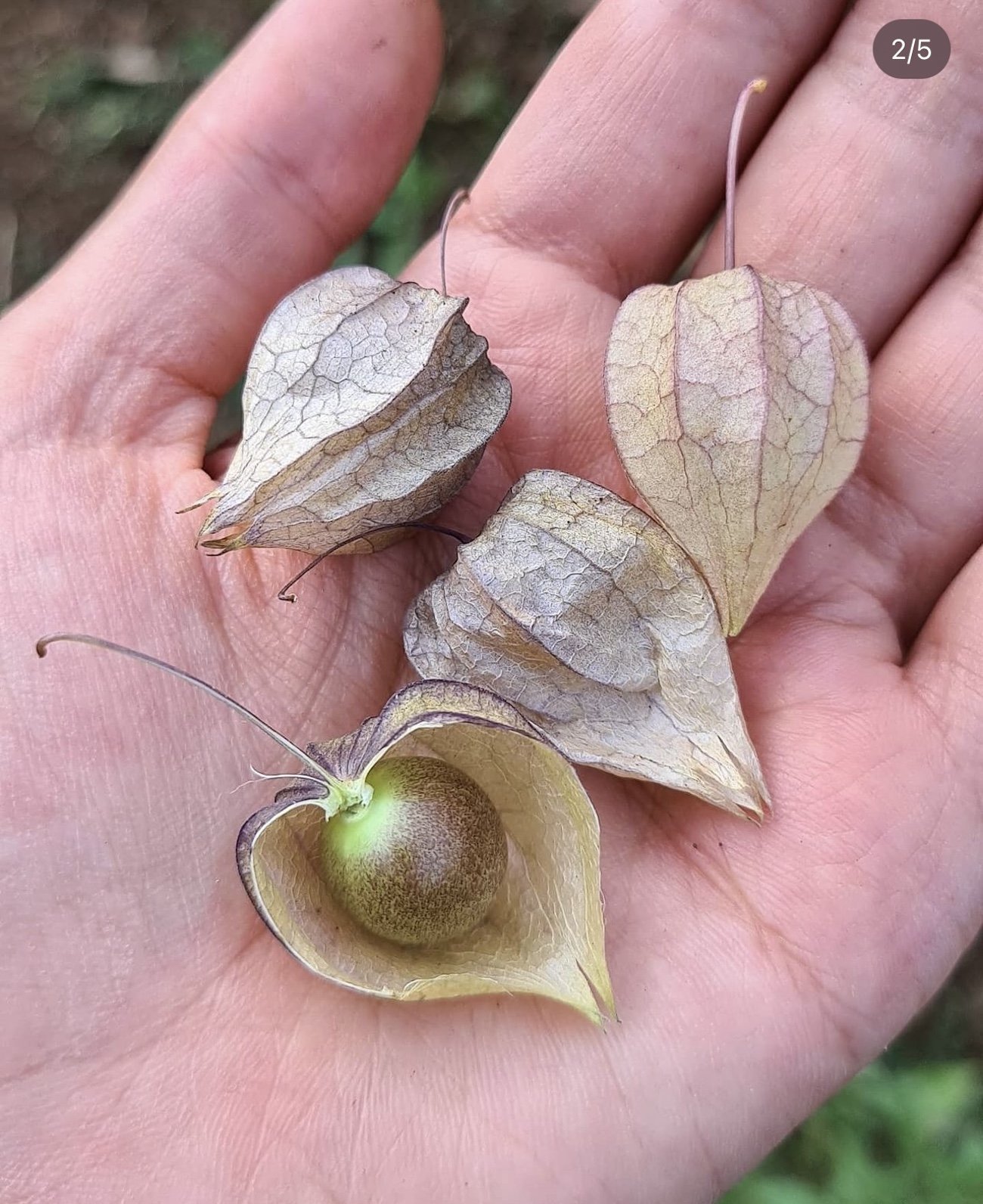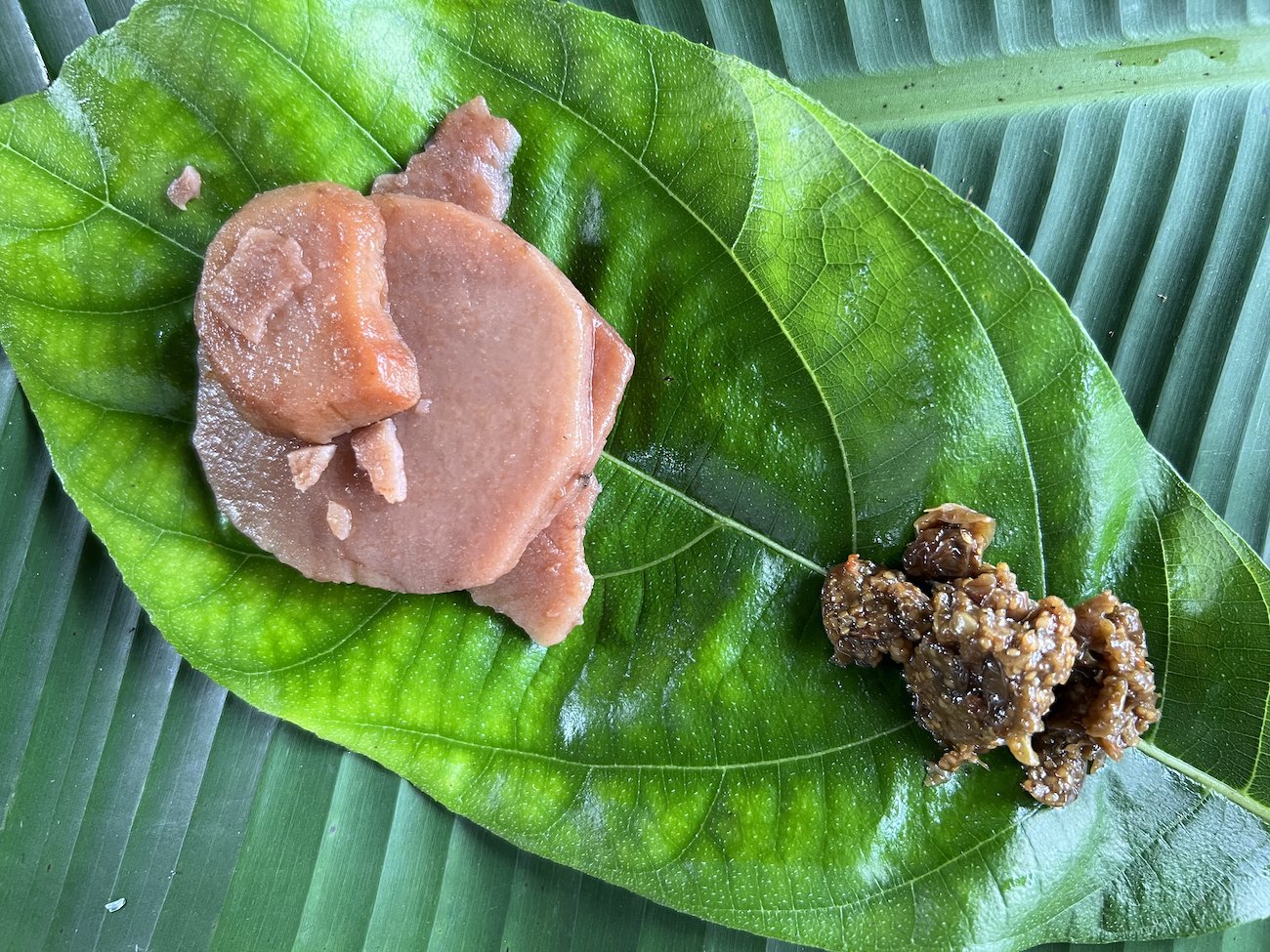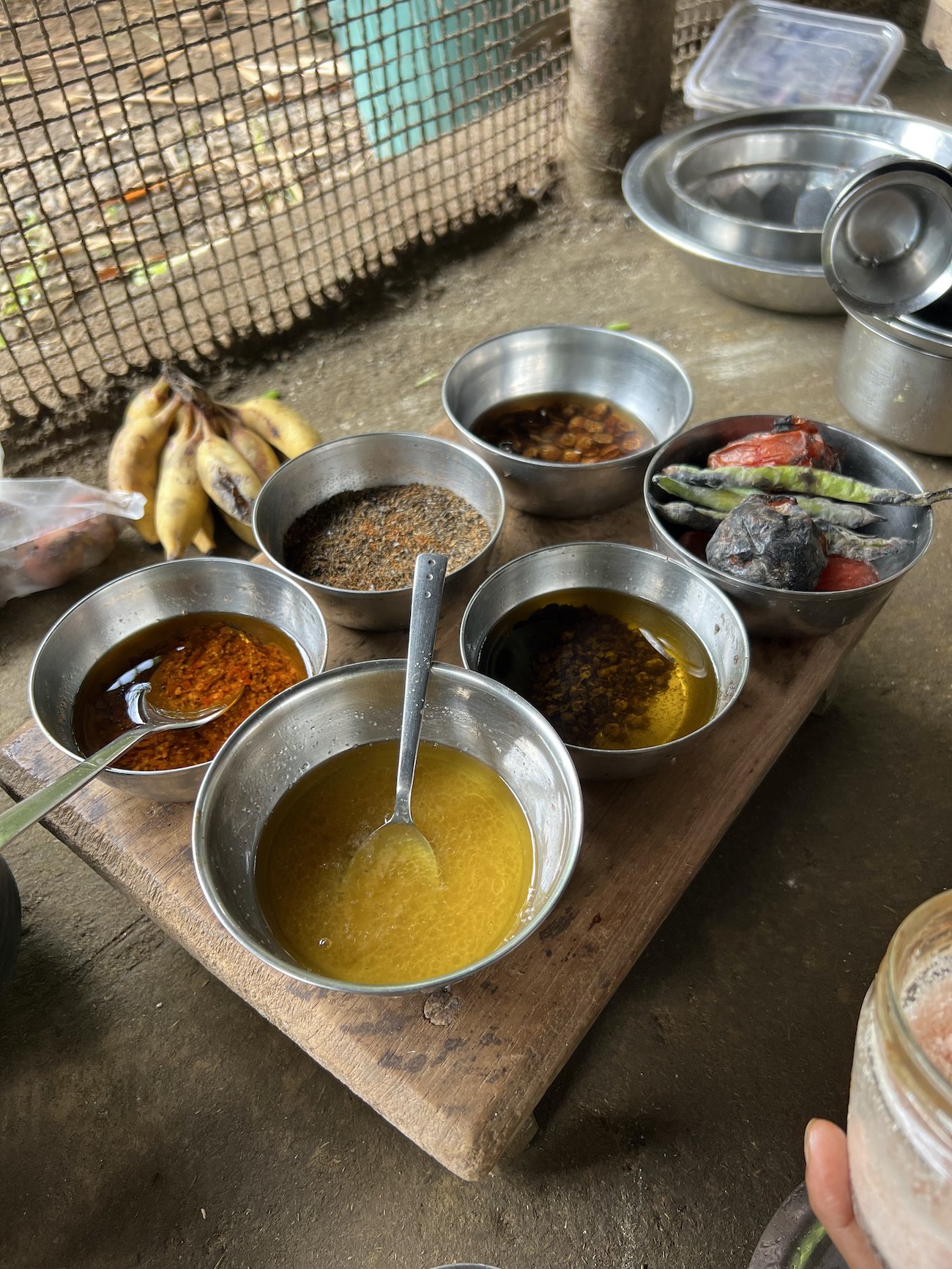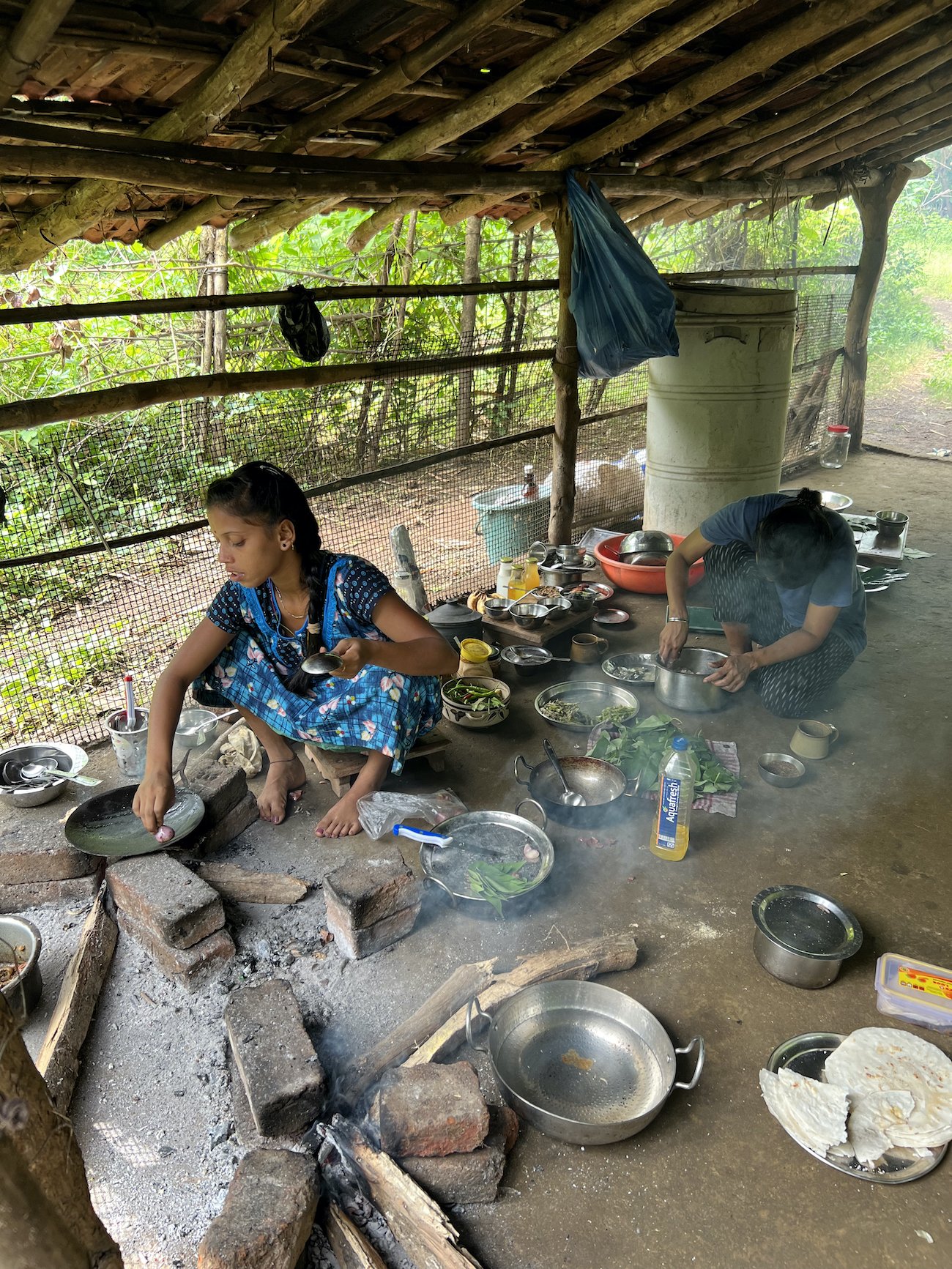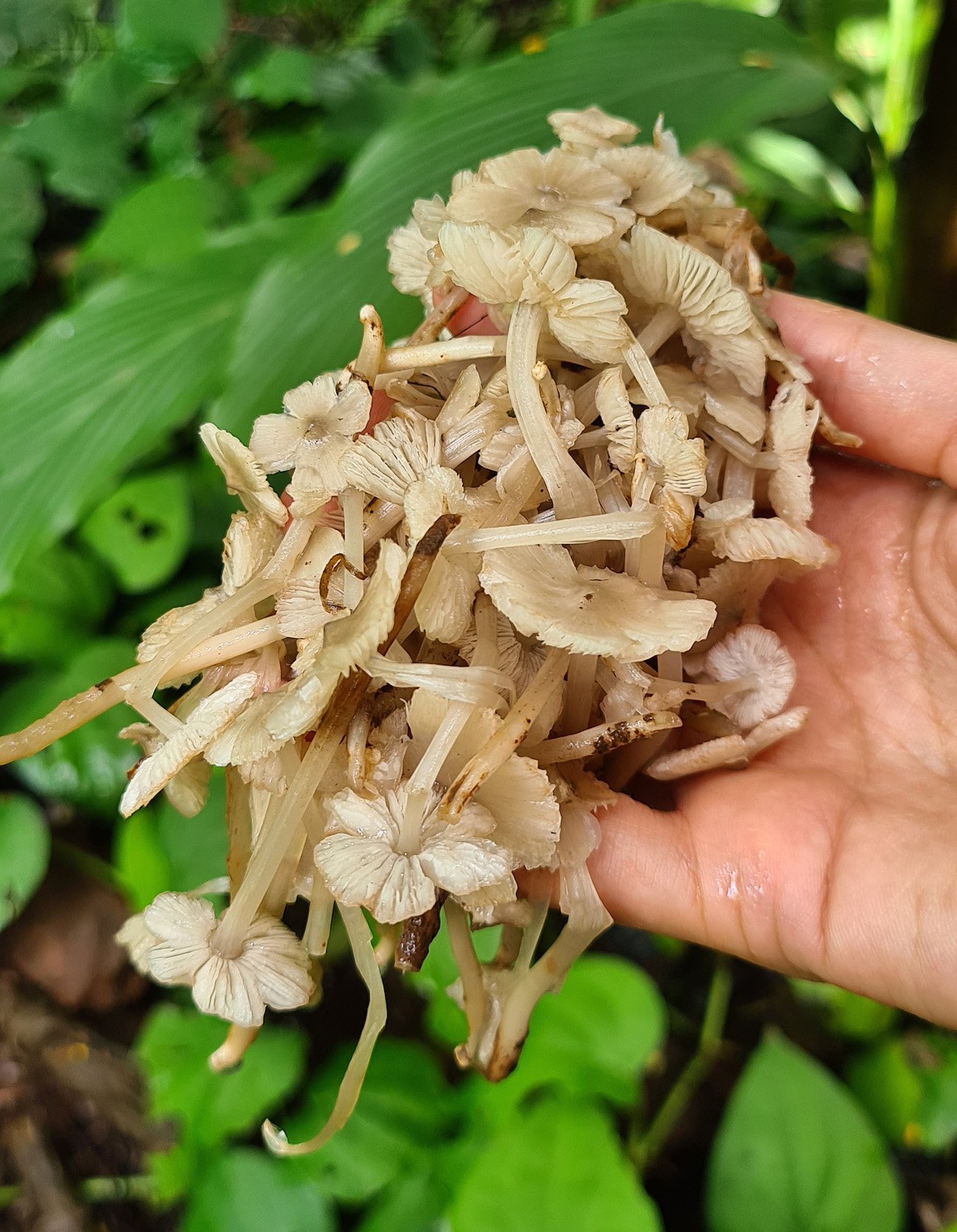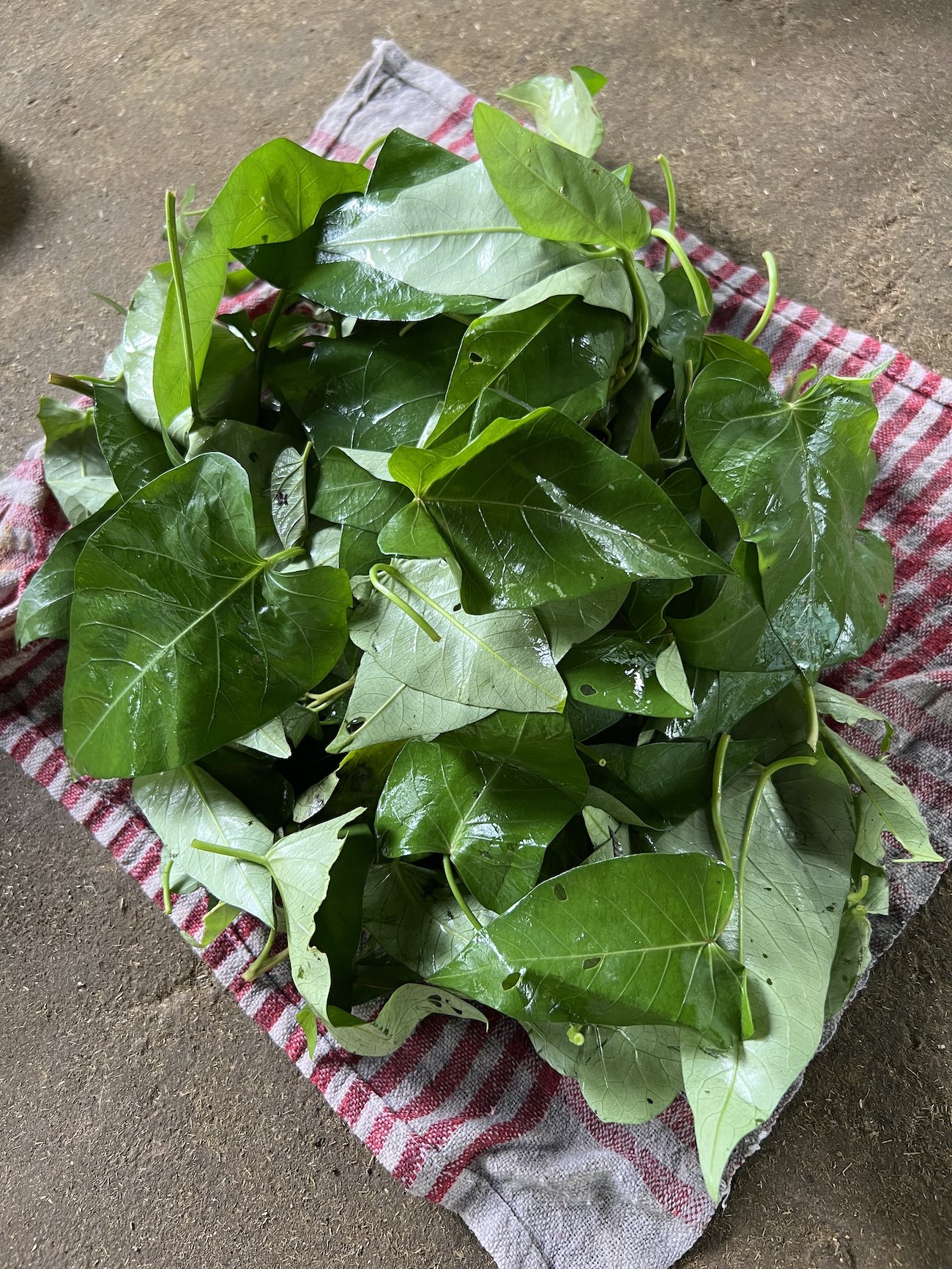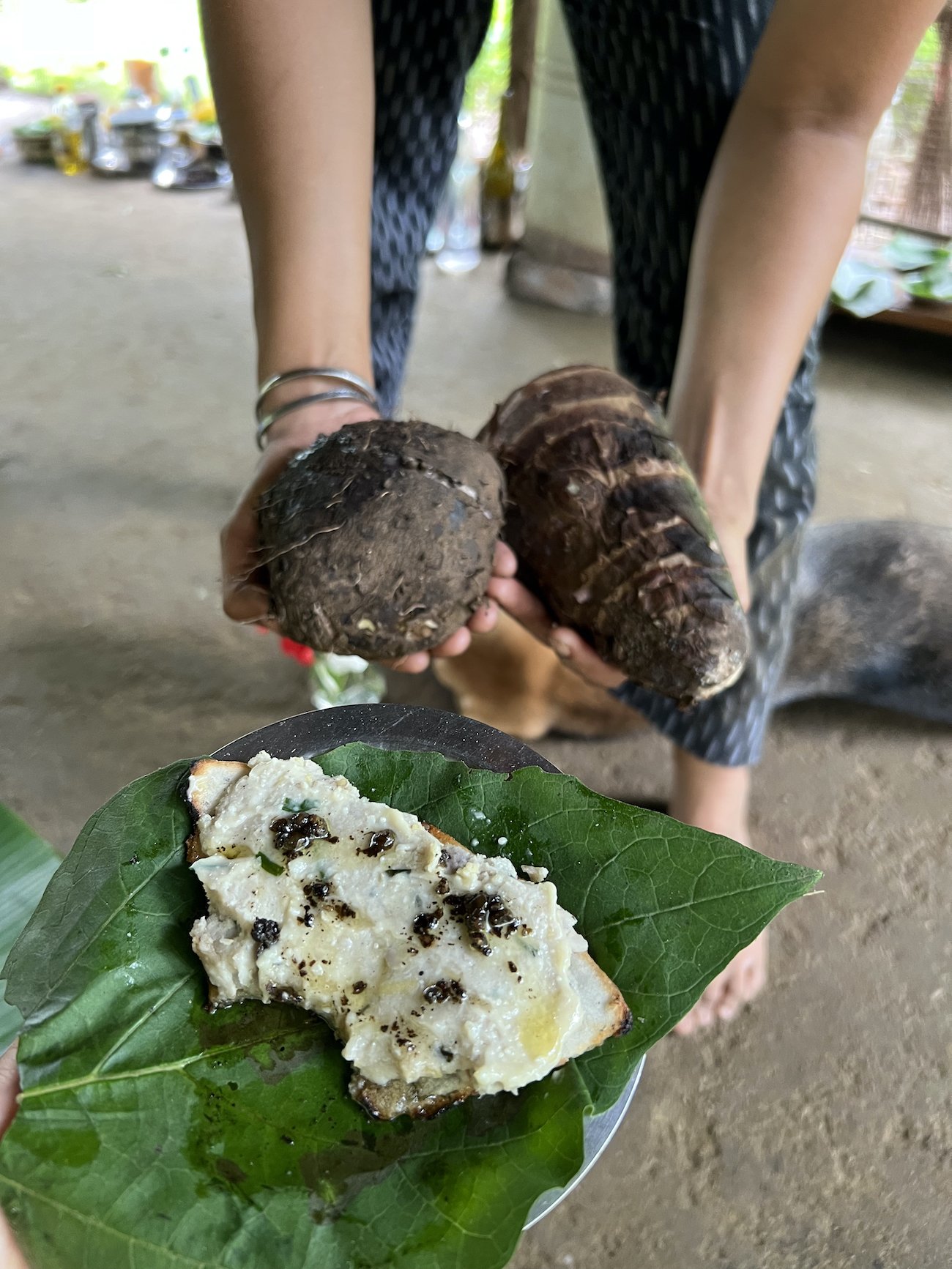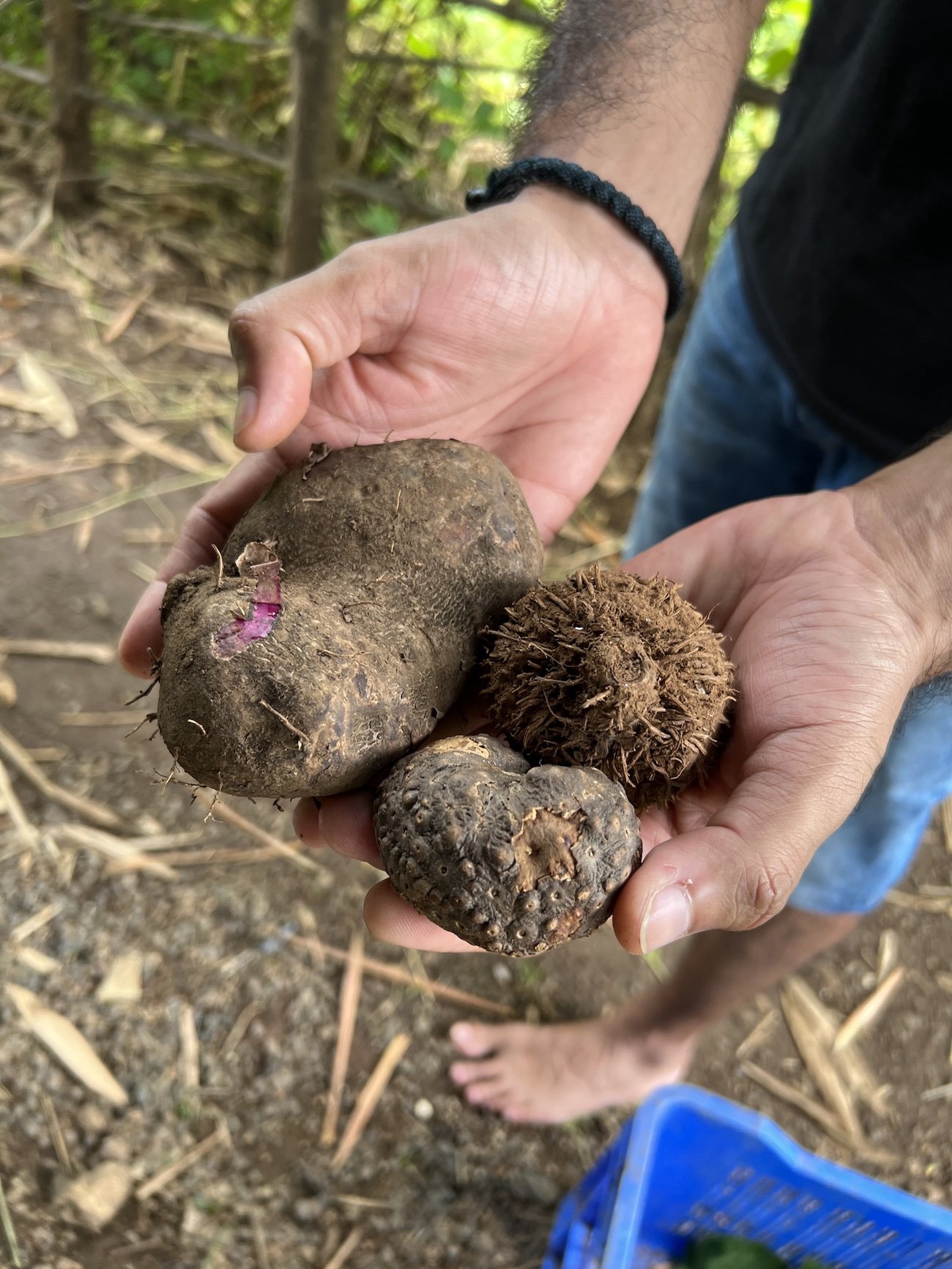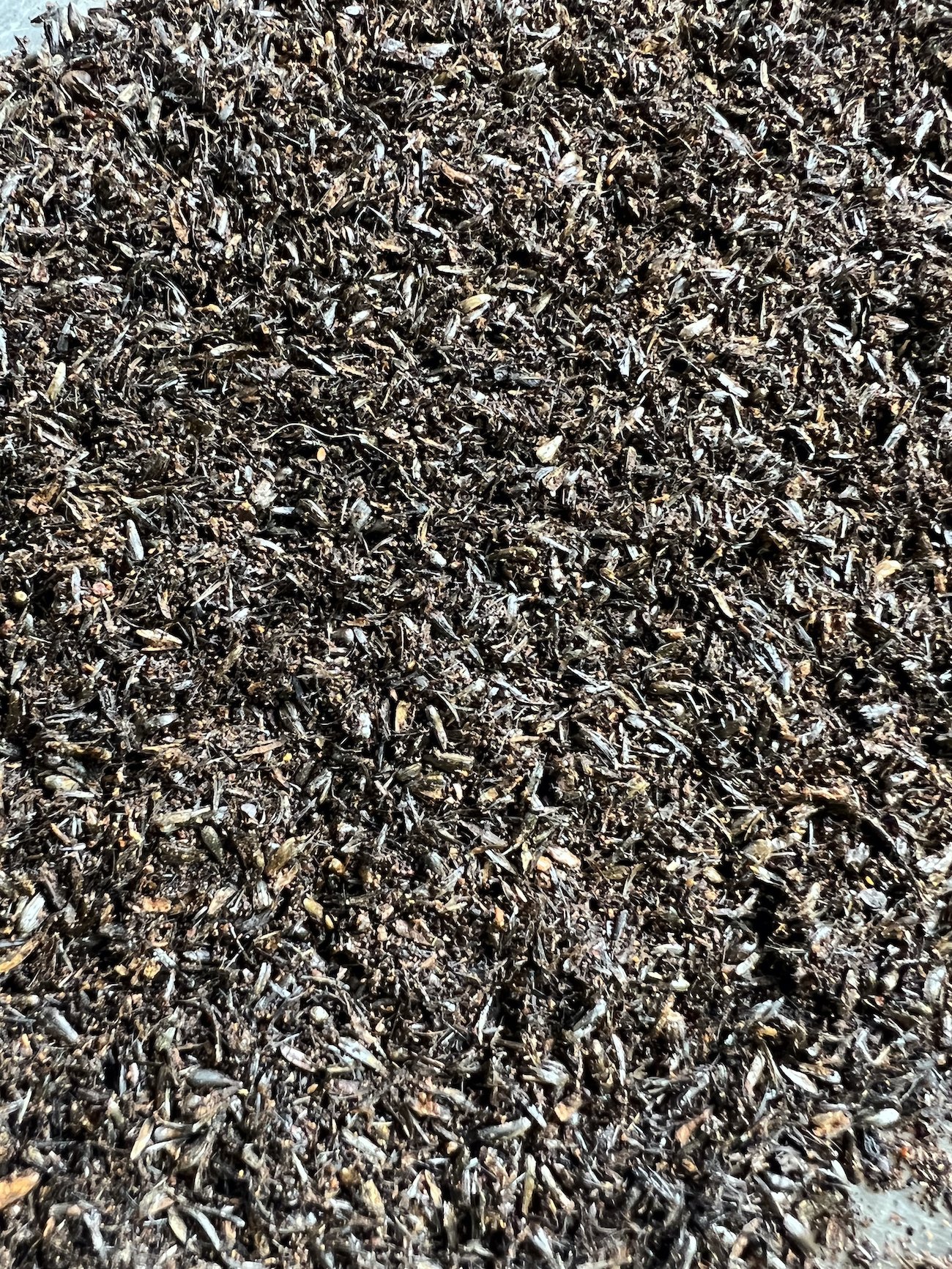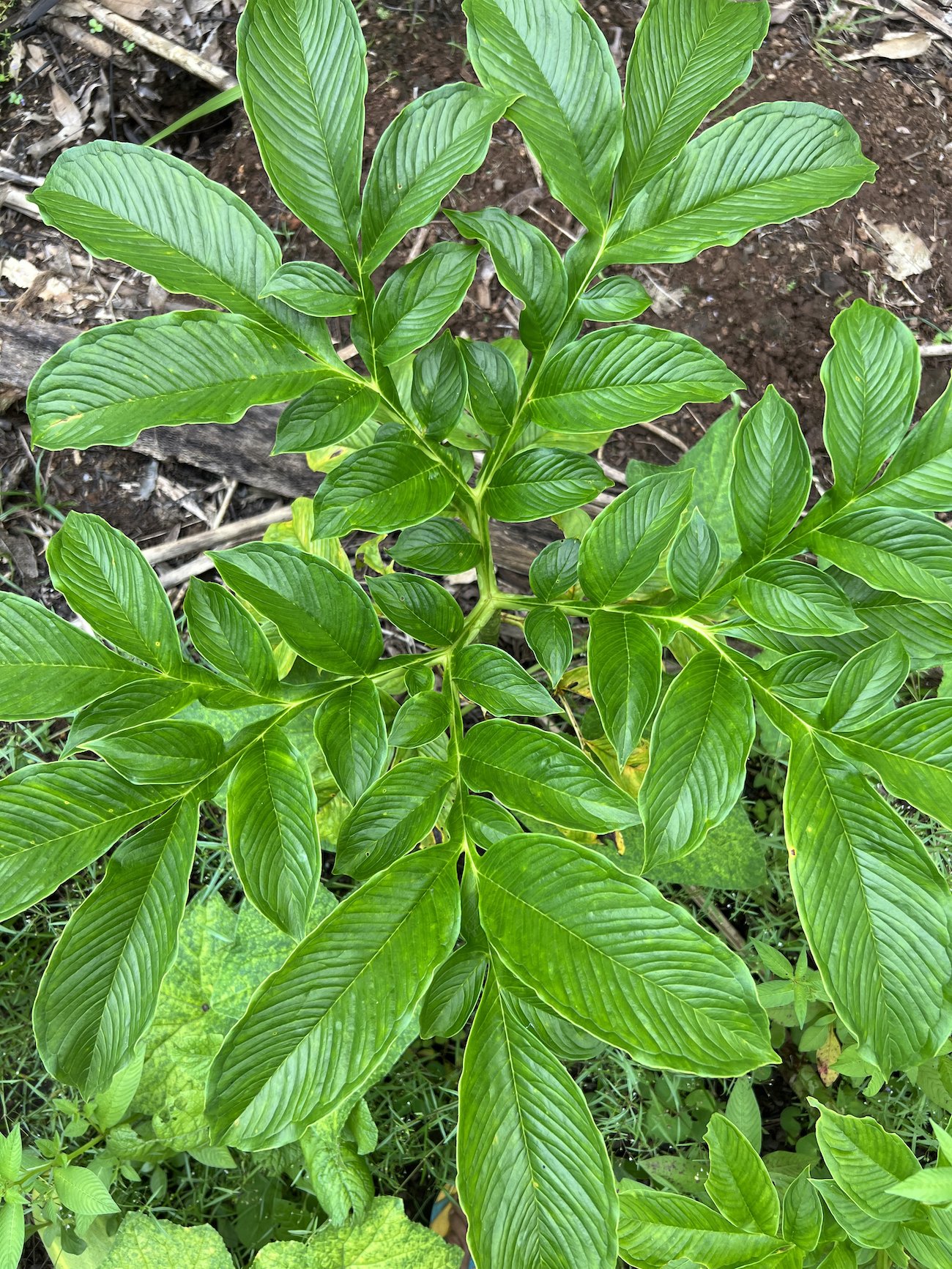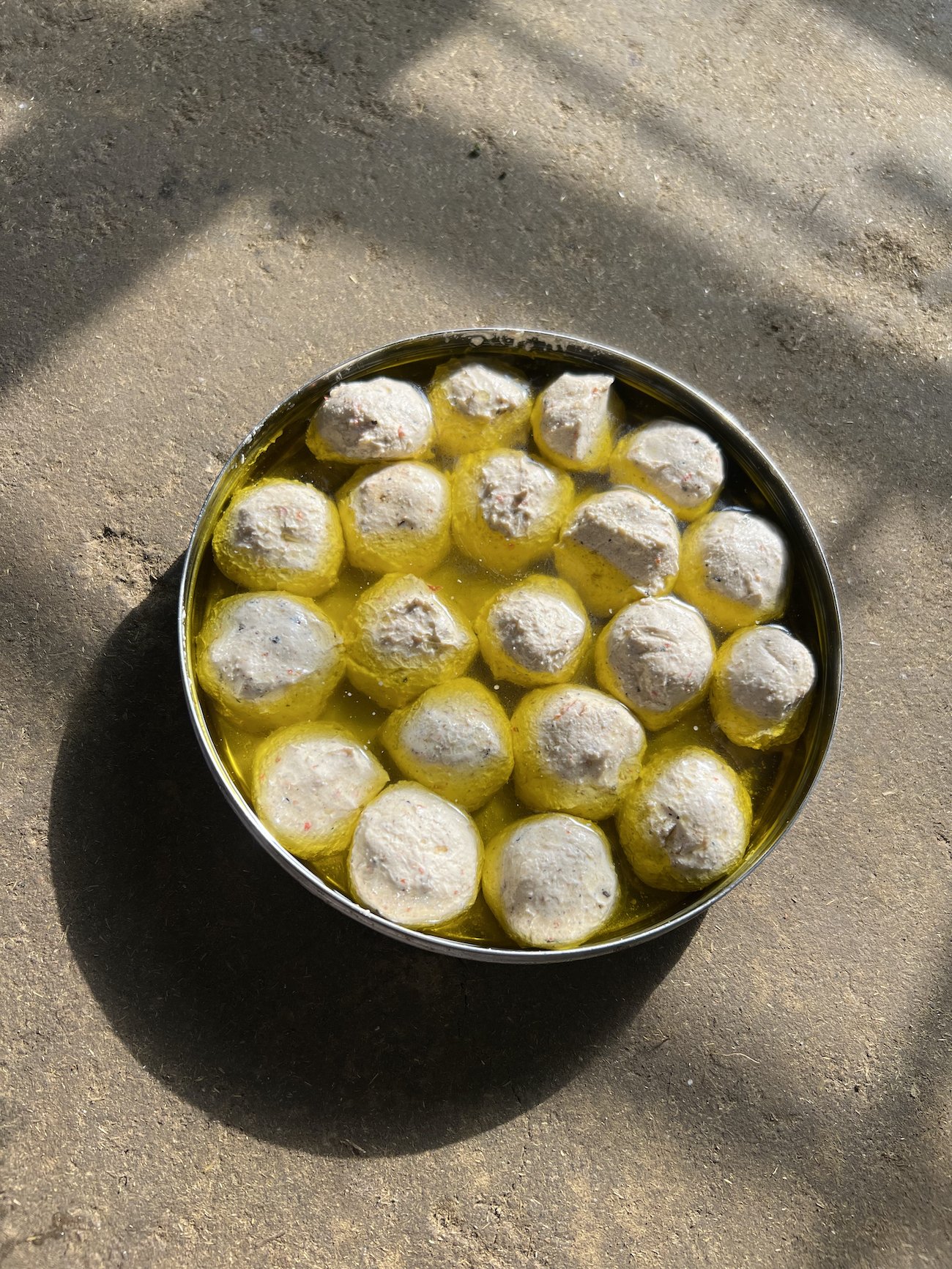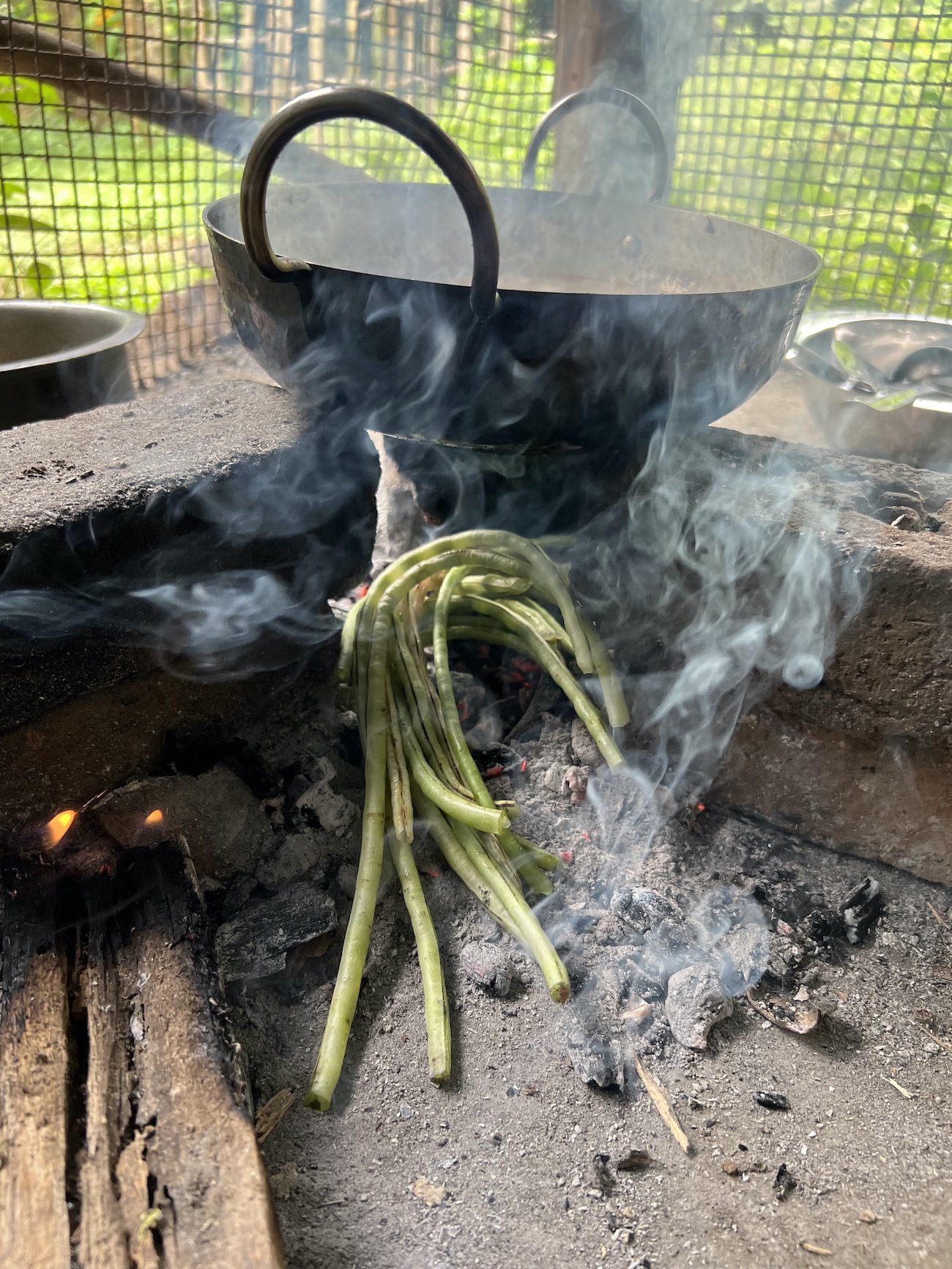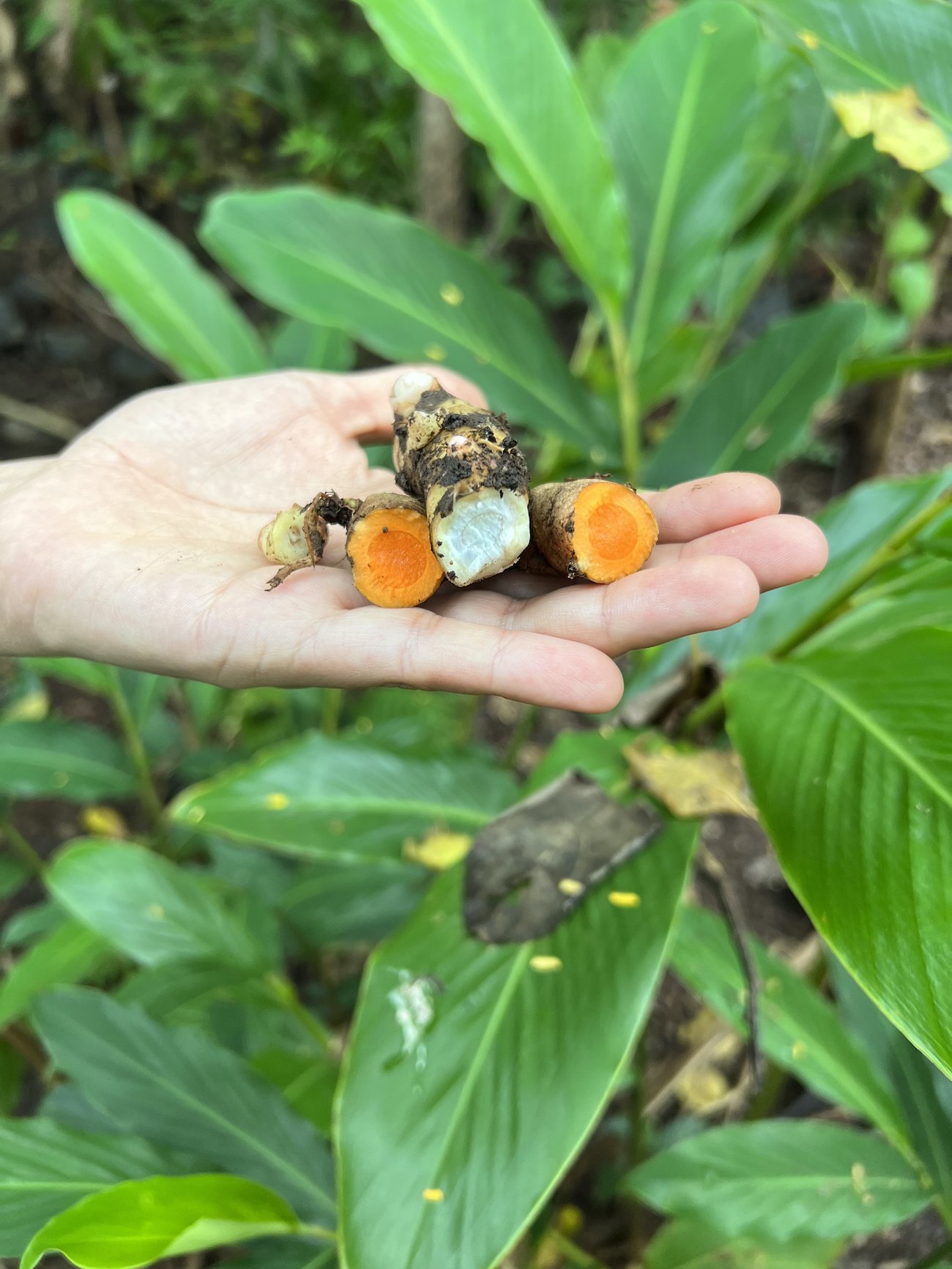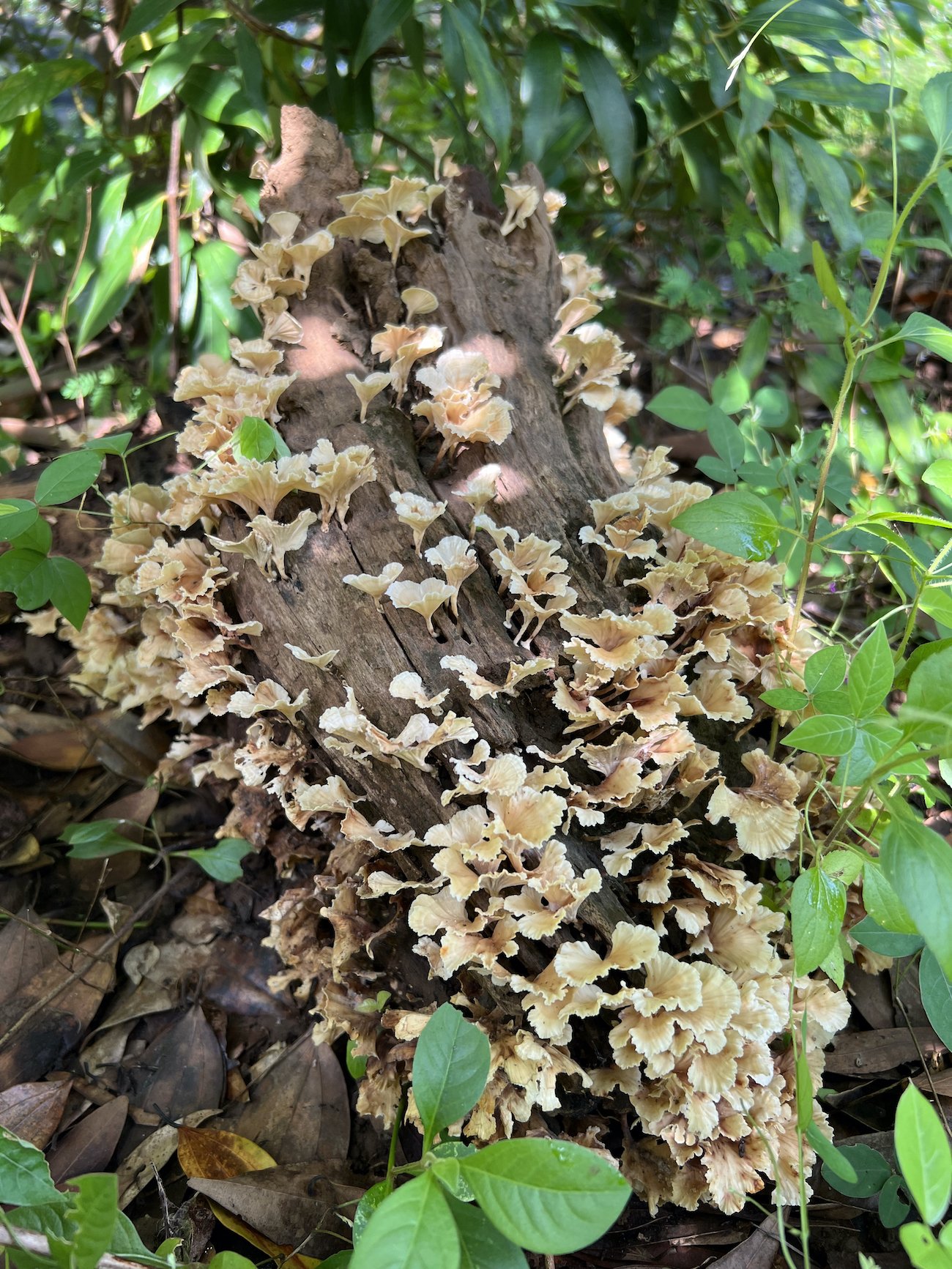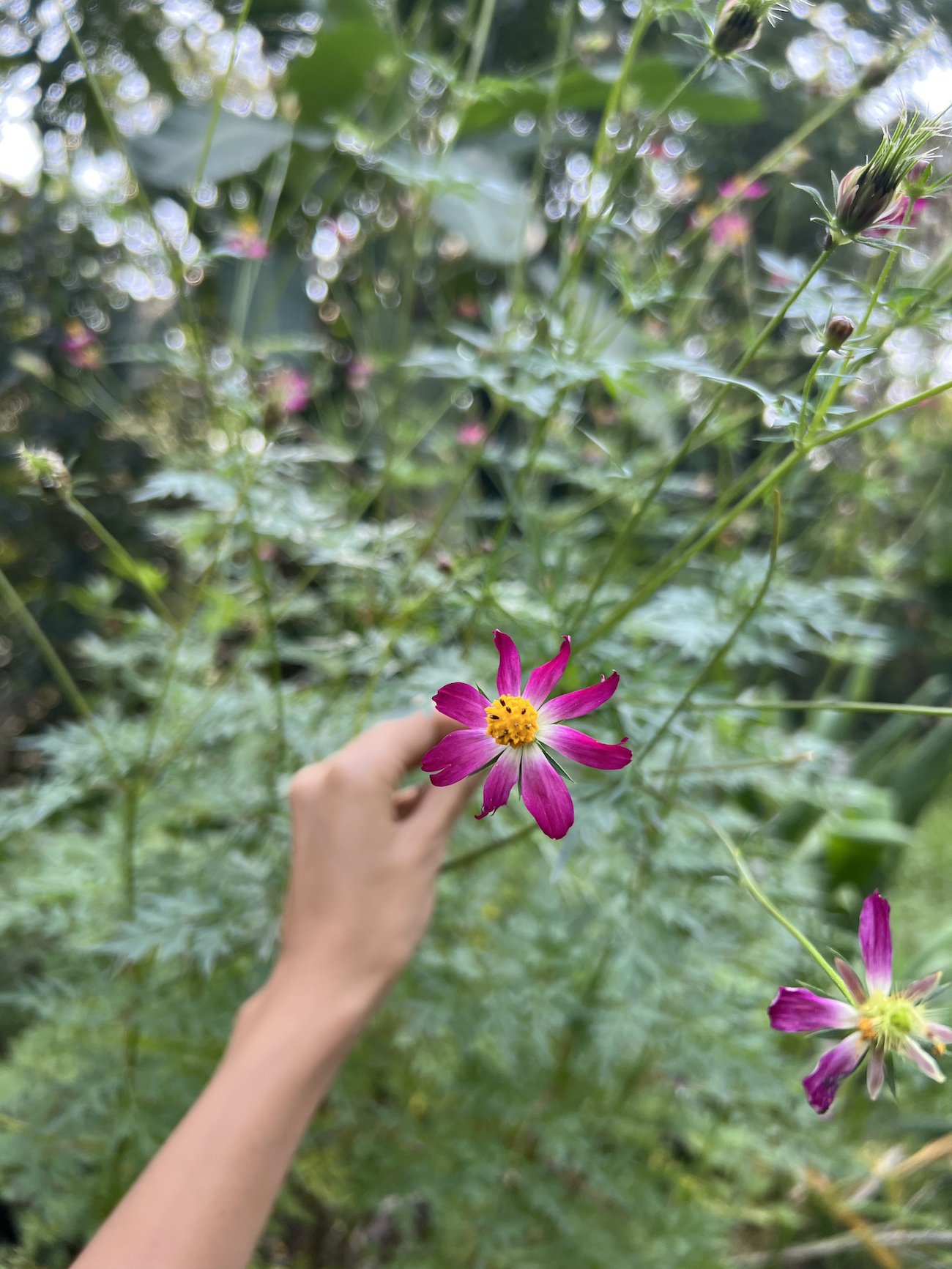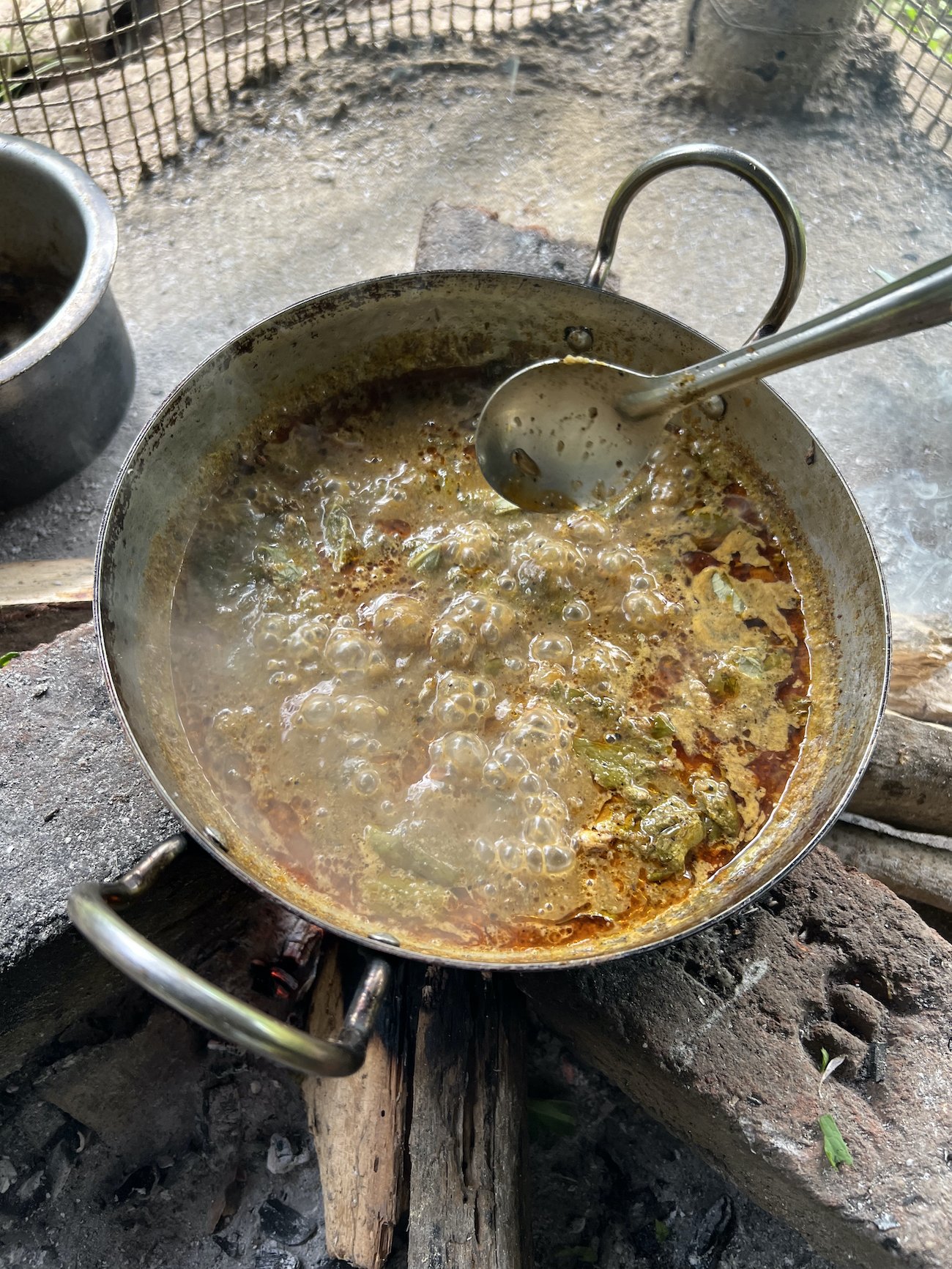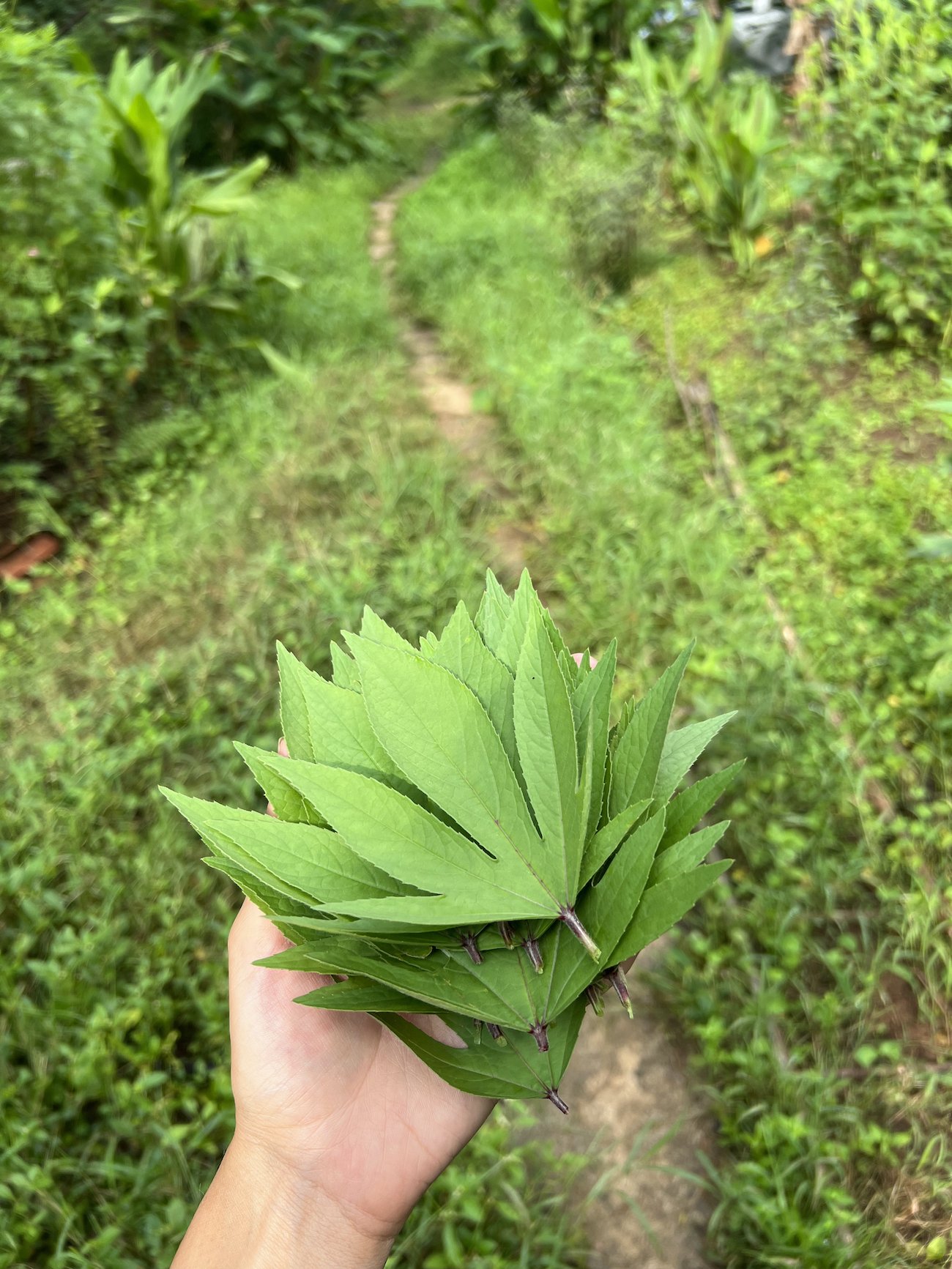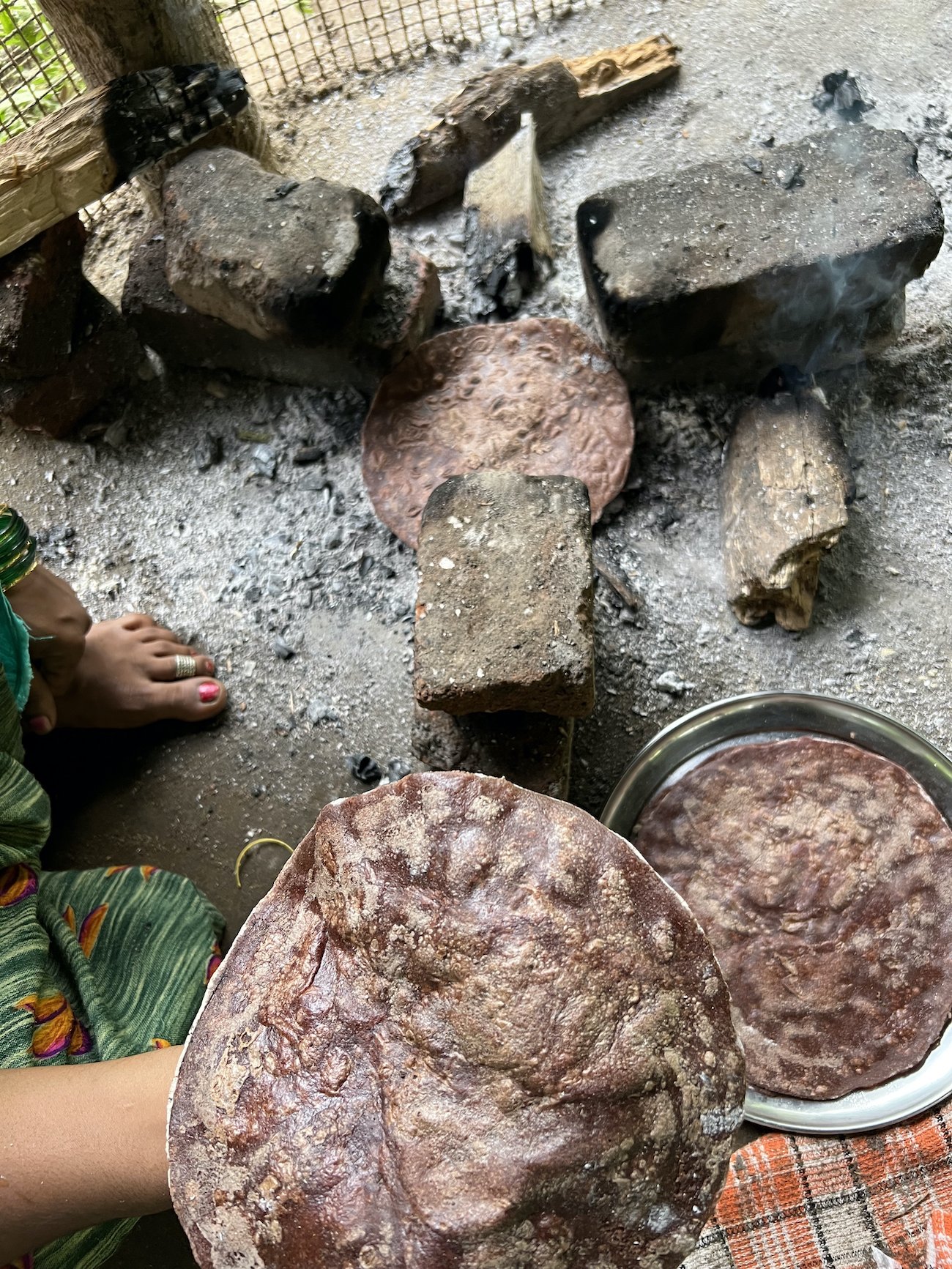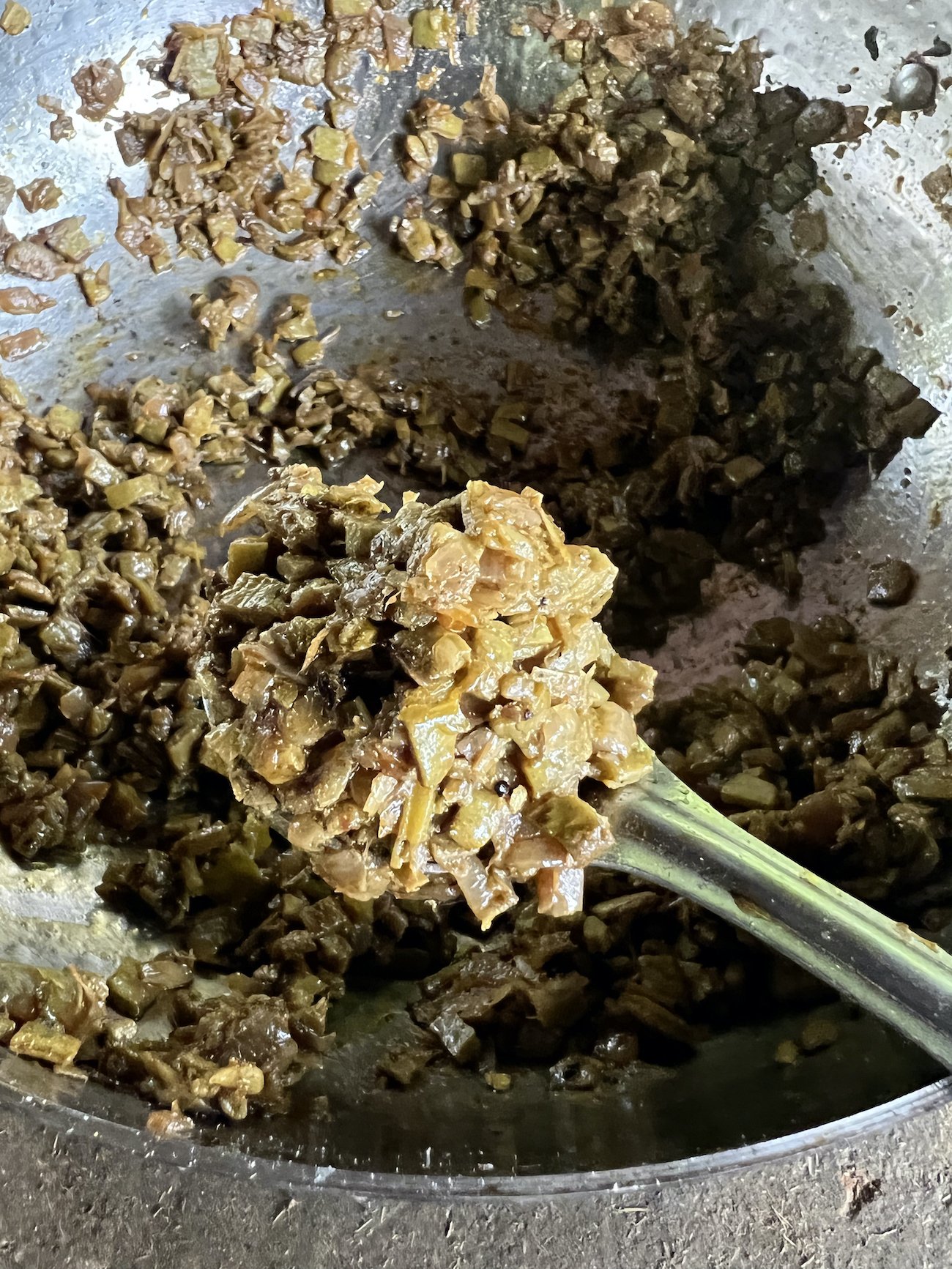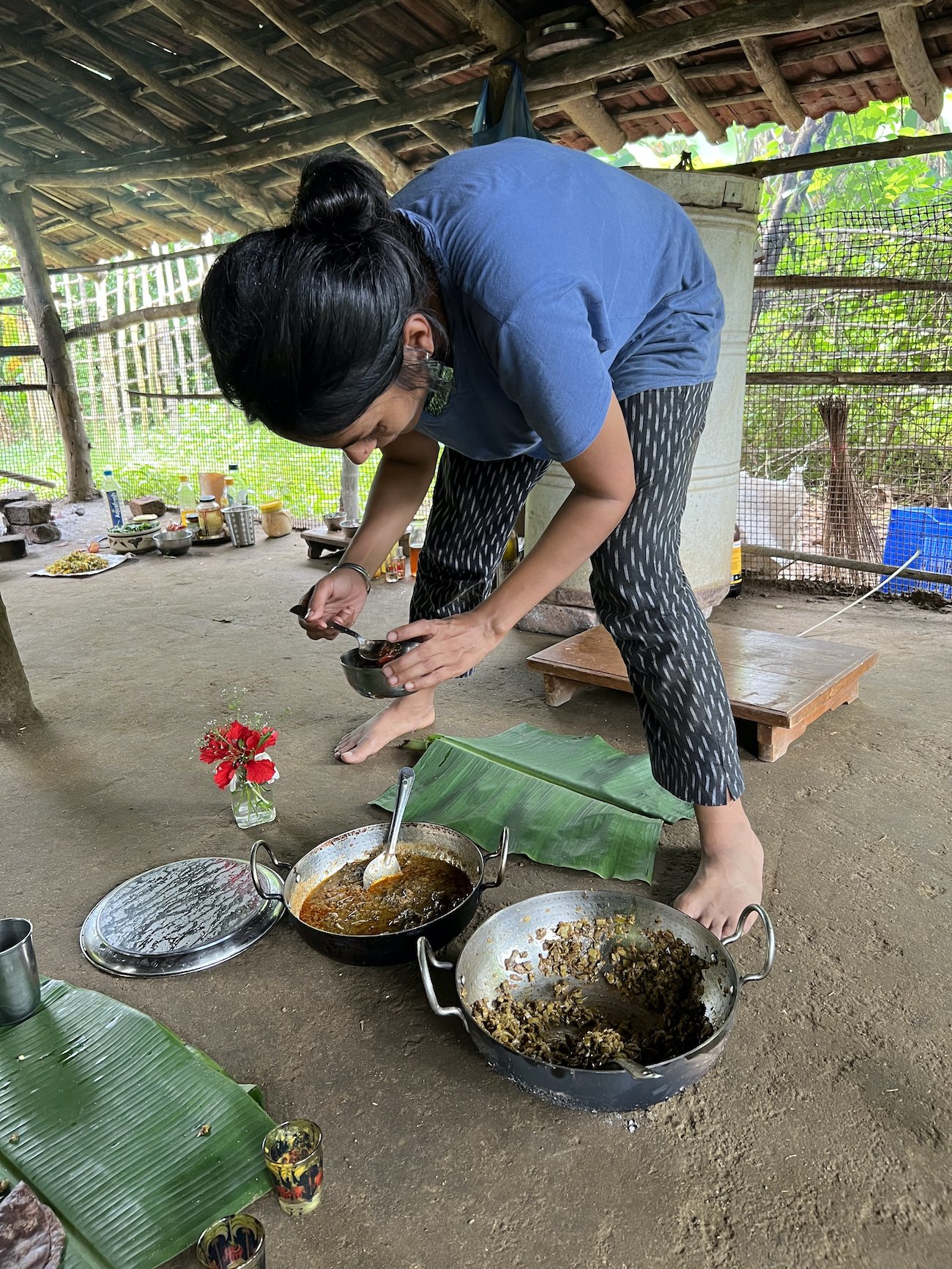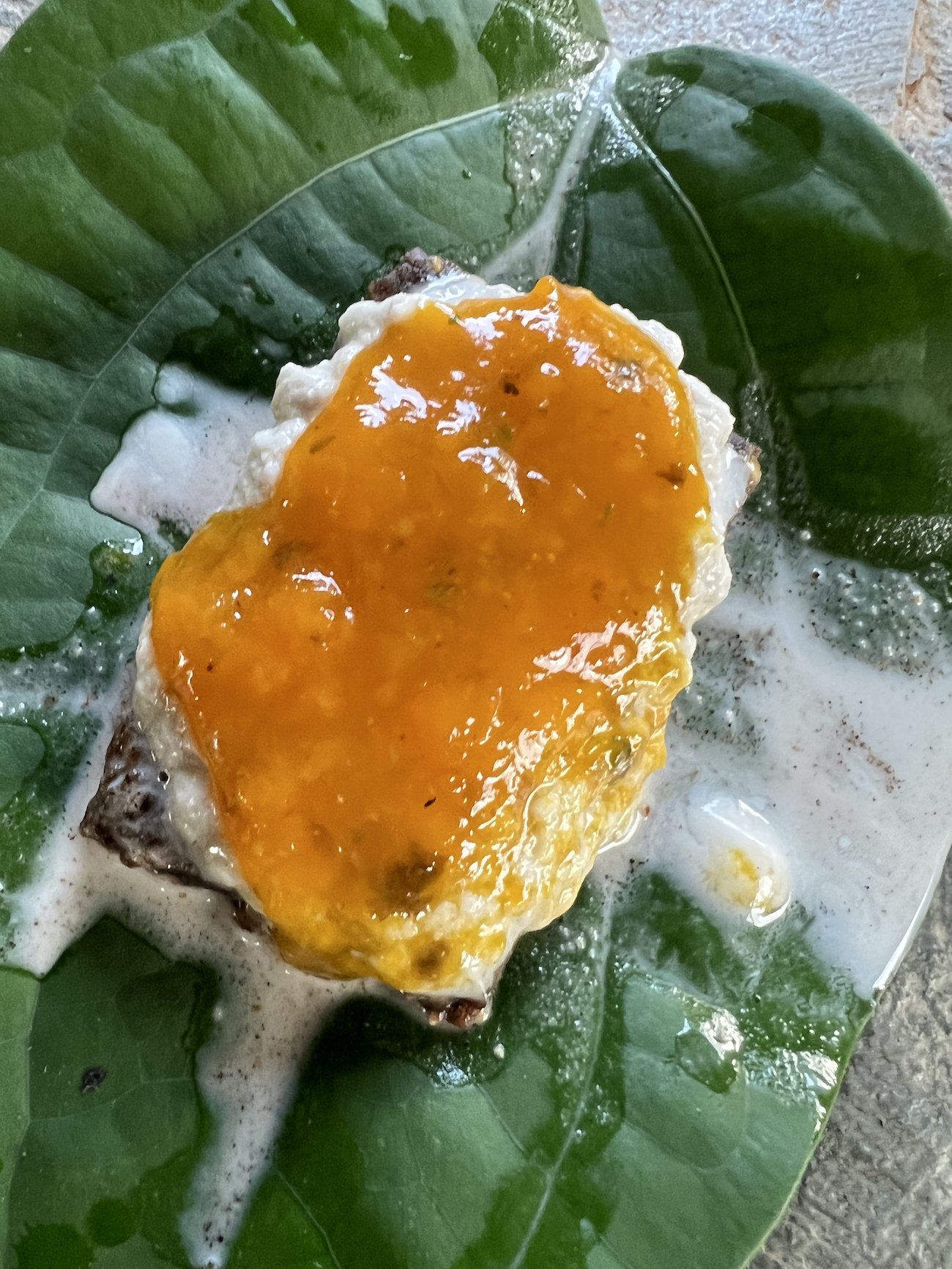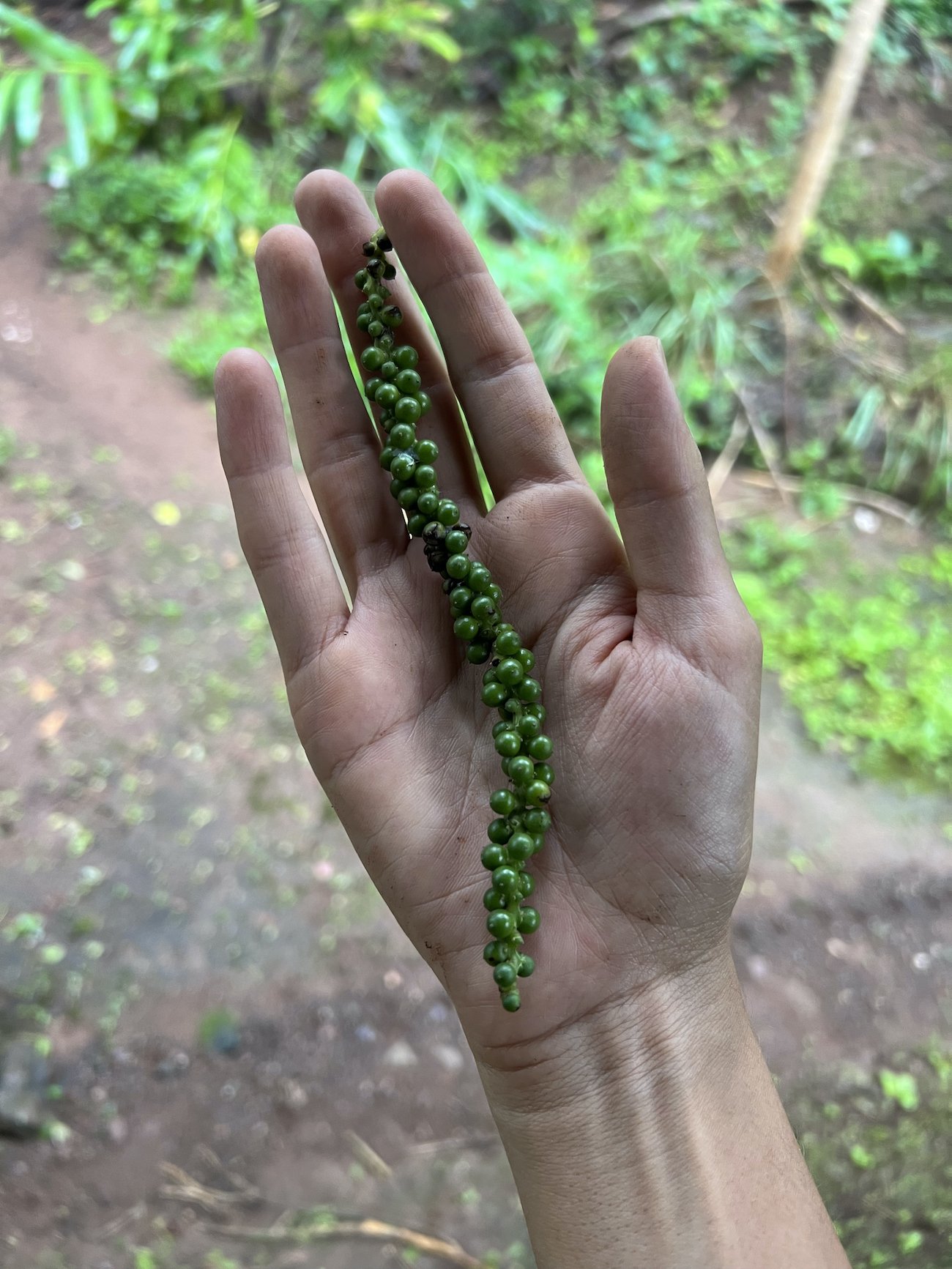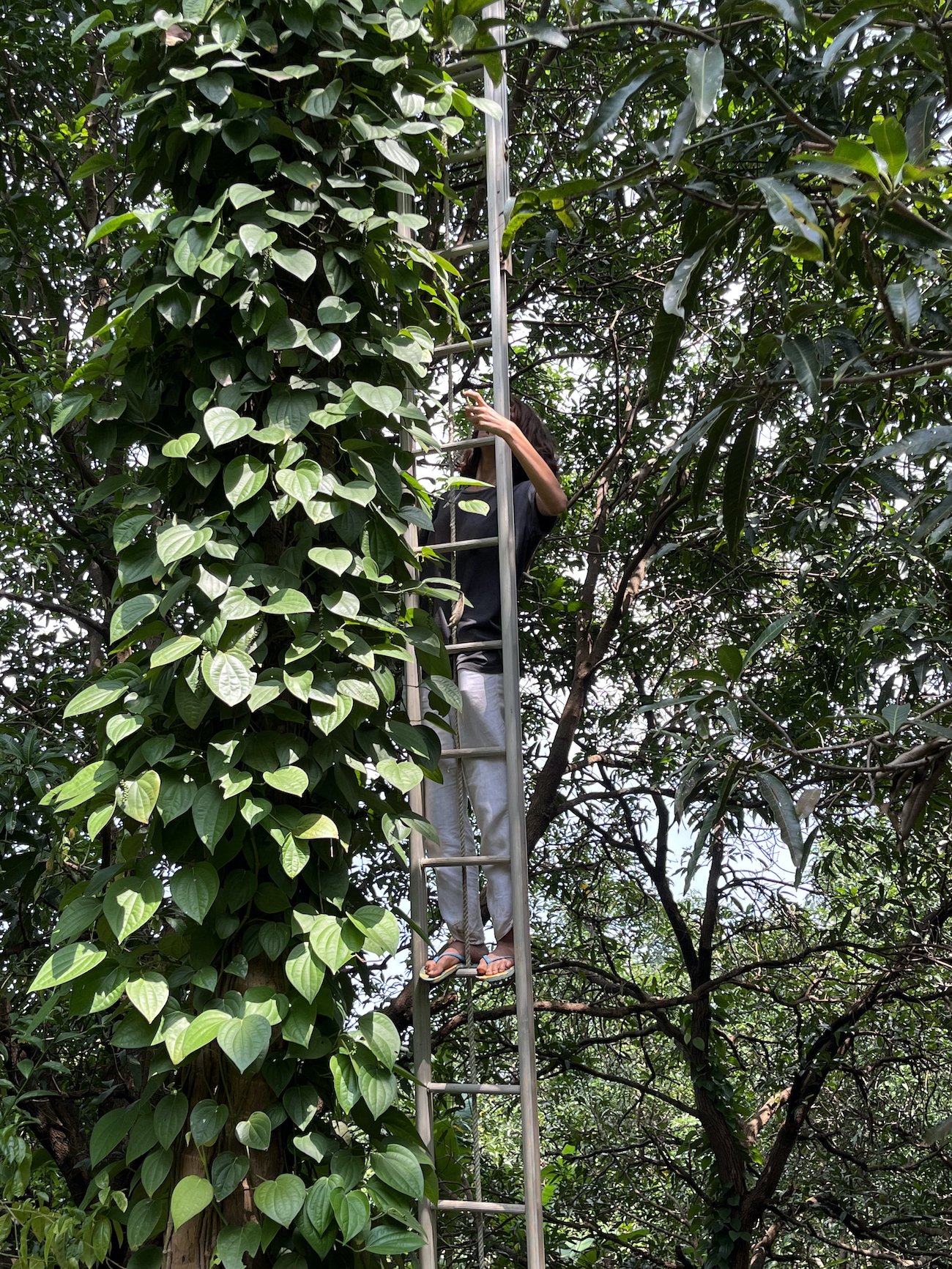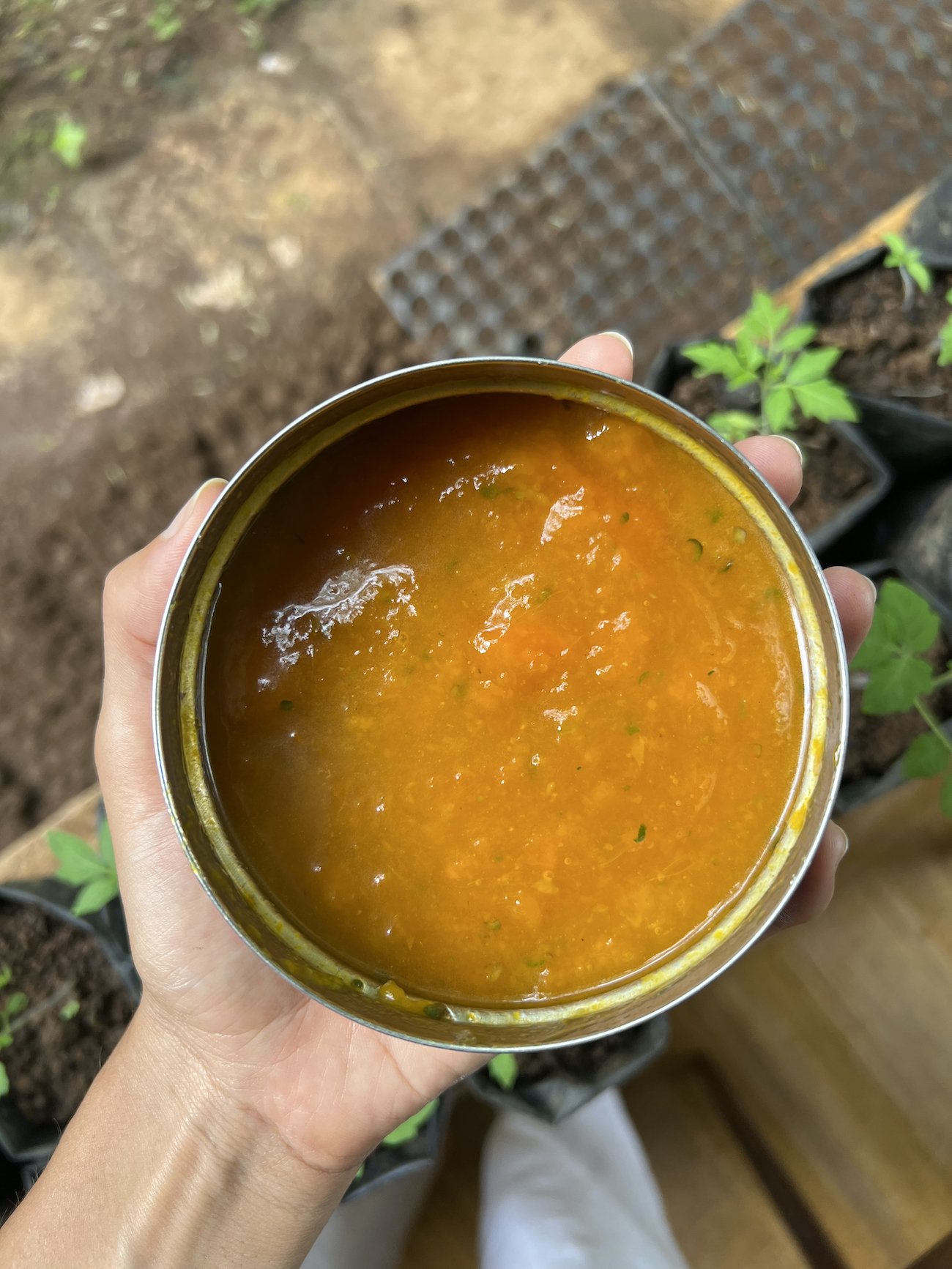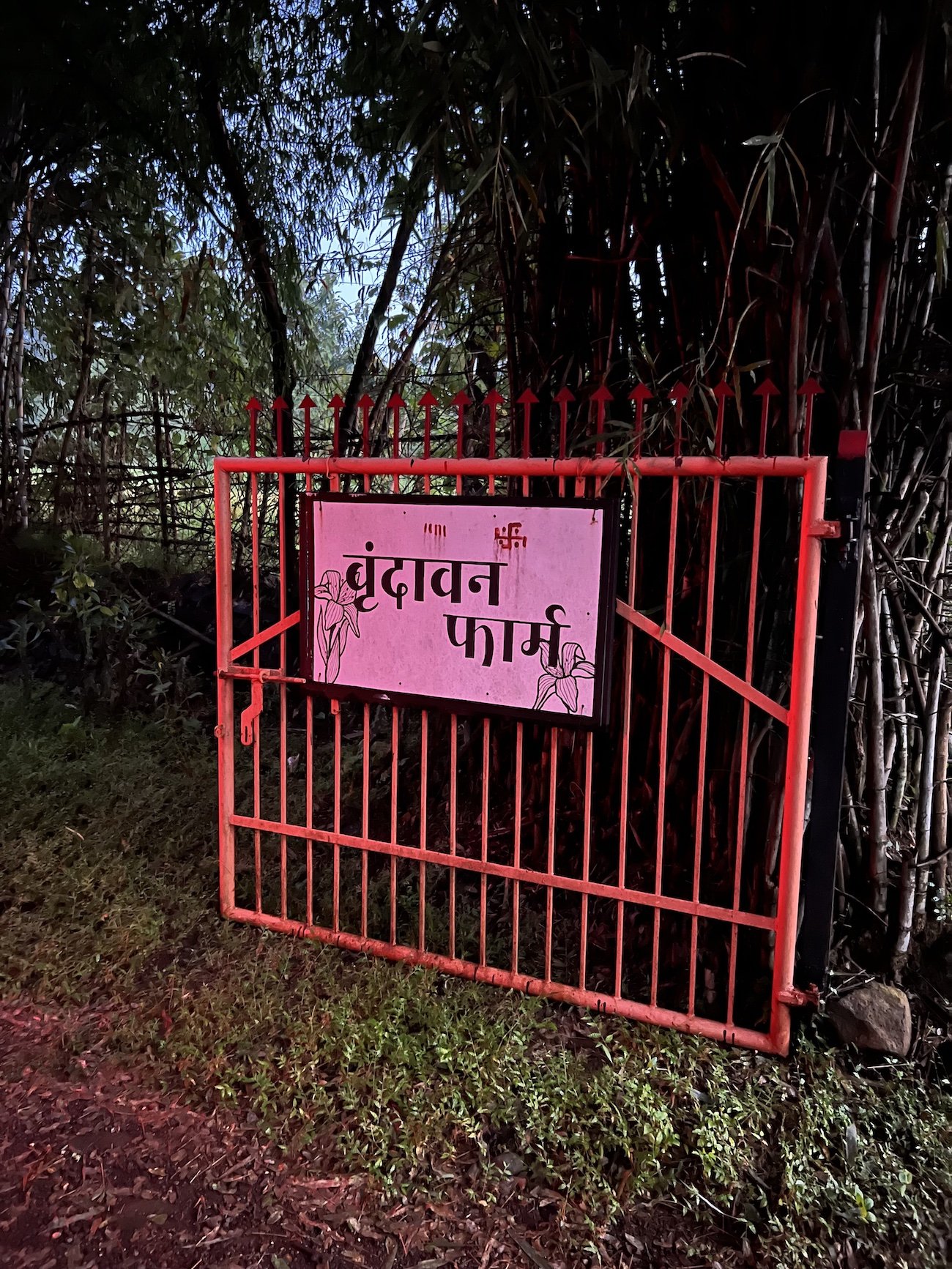Inside the Season's Most Incredible Meal: Vrindavan Farm X Ground Up

Simran Moorjani dined at Vrindavan Farm’s collaboration between farmer Gaytri Bhatia and chef Gayatri Desai. An unusual and entirely incredible meal made from food grown on the farm, sourced from neighbours in the village, or foraged from the forests that surround them, this was a chance to sampled ingredients and dishes that are little known outside the region.
I spent time as an apprentice at Vrindavan Farm early last year, and I must confess it will always hold a special place in my heart. Vrindavan’s philosophy and the way Gaytri works the land has taught me to raise the bar on produce. Gayatri, the chef, another woman with incredible knowledge and experience, does seemingly simple things to ingredients, with results that are so unique and elevated.
Gaytri Bhatia, the heart and soul behind Vrindavan Farm and its celebrated produce, worked as an environmental analyst in Boston until she decided to leave it all behind and return to her ancestral land in Palghar. In the early days, she spent half her time on the farm growing food and learning about the land and the other half in the mountains, leading treks and teaching first aid. Slowly, each season took on its own life. In the winter, tomatoes — over 40 varieties; the fruits that follow as summer approaches, with mangoes at the helm; the many varieties of indigenous rice; discovering new and old foods foraged by the people of Onde, as monsoon comes to a close. The soil somehow, only became richer with each passing year, because more is given back than is taken. Doing as little as possible to the land, and farming in harmony with nature, remains Gaytri’s core philosophy.
Gayatri Desai, the head chef and founder of Ground Up, Pune was born and raised in Pune. Gayatri worked in advertising and travelled extensively throughout the country, becoming fascinated by food, the techniques involved in cooking, and how diverse they were from place to place, all rooted in similar principles. She went on to study the culinary arts at the Northwest Culinary Academy of Vancouver, working at restaurants whenever she got the chance. When she returned, Gayatri ran pop ups out of her rooftop kitchen in Pune. Ideas began to take shape in the form of her restaurant, Ground Up, embodying her philosophy – when she cooks, everything is done ground up. She sources ingredients directly from farmers, makes her own tofu, smokes meat in-house, makes nut milk from scratch, and ferments her sauces and booches in-situ. With a menu that changes every couple of weeks, Ground Up is a one-of-a-kind experience. This year she is taking things up a notch.
The two G's met at Vrindavan Farm five days before the event. They spent three days together in the field, in the village market, in the homes of the Onde community, even in the river, to learn about the wild and cultivated produce, and the ways in which they are eaten. Making mental notes of every taste, smell, texture – a veritable mindmap with invisible threads connecting flavours and building recipes.
The day before the event was spent in prep: yogurt was turned to labneh; ingredients were ground to make chutneys; oils were infused; desserts were set, and all that could be done was done. On d-day, each dish served was unique in flavour and experience. Each plate was more than just a plate of food – each plate told a story. A story of food grown with care and attention, from seed to harvest and everything in between; a story of traditions woven together with knowledge, experience, and most of all, love.
Course 1: Sliced Kadukandh with Chirboot Chutney
On occasion, potatoes and other tuber forming plants, form aerial tubers. Kadukandh is one such; also called ‘air potatoes’ because they grow along the stems of a monsoon climbing vine.
Gayatri’s inspiration behind the course was to serve kadukandh as eaten by the people of Palghar. The tribals leave the tubers overnight in ash to remove the kadu, or bitterness. The tuber was then elevated with a wild tomatillo chutney, with another fascinating story of its own.
Chirboot grows wild at Vrindavan and the surrounding village. It is considered a hostile invasive by locals, is almost always weeded on sight. Luckily for us, Gaytri’s curiosity led her to knowledge that several canning industries in Mexico have turned this plant into a primary source of income. Tart, sweet, and completely safe, Gayatri took this humble weed to a whole new level. The dish was plated and served on a ficus leaf, which was swiftly discarded at the base of a tree nearby as we demolished the first course and moved on to the next.
Course 2: Mushroom & Mahadi porridge, with sautéed Naal Bhaji and fermented Chilli-Pepper oil (Termitocyes Mushrooms, Mahadi Rice, Water Spinach)
Four different stories come together in this course. Termitomyces are a genus of fungi that grow symbiotically with termite colonies. A notoriously finicky variety that scientists, agriculturists, and fungi farmers have tried hard to cultivate, but failed. At Vrindavan, it typically shows up right after the Ganpati celebrations, just in time for our feast.
Mahadi is a variety of rice that Gaytri holds very close to her heart. Richer in chew, and more filling that polished white rice, mahadi is toasted, pounded and then cooked into a creamy umami bowl of porridge.
Naal bhaji is river spinach! Gaytri and Gayatri jumped into the lake to harvest it; and with a quikc sauté in olive oil, it was delicious and buttery.
And the glorious finish, made with chillies that have been fermenting for over a year at the Ground Up fermentary, and freshly pounded green pepper.
Course 3: Smoked Komchi and Kandh mash on Bhakri, with koji cheese and a Black Pepper oil
Komchi, another monsoon tuber eaten by the tribes of Palghar, were left overnight on wood-fire ash on the challah, to remove bitterness and add hints of smokiness. Mashed together with a selection of herbs and spices, it was served over crisp rice flour bhakris. Crispy bhakri is best made from day old bhakri, in the tradition of the Onde community.
Koji cream cheese that has been fermenting for over a year at Ground Up, has a distinct flavour that is reminiscent of blue cheese. Over this, was drizzled a pepper oil made from farm buffalo ghee.
Course 4: Suran stalk with a vinaigrette of khursani oil, onion shio koji and onion honey, finished with khursani seed and wild garlic salt.
Khursani, or niger, was first grown at Vrindavan two years ago; it has now taken over several glorious patches at the farm. The seeds are harvested to make a cold-pressed niger oil to which, a single teaspoon of Gayatri’s onion shio koji and onion honey is added, and this transforms the dish into something fresh and incredible.
In a generous pool of this vinaigrette is served elephant foot yam stalks, threaded and steamed with salt. The farm’s suran, in itself intense and flavourful, is now elevated, its flavour almost like asparagus. With a generous sprinkle of toasted and ground niger seed & garlic salt, this was a nutty and aromatic course to savour.
Course 5: Three Bean Salad using Abhay Beans, Chawli and sprouted Black Moong with Buffalo Milk Labneh.
This refreshing 3 bean salad features chawli – given a quick cook and char over naked flame; abhay beans – a beautiful variety Gaytri grew for the first time, simply boiled and salted; and black moong, left to sprout overnight in muslin cloth.
Each bean brought its own flavour and texture, tied together with a creamy buffalo milk yogurt, seasoned with fresh birds eye chilli and pepper from Vrindavan.
Here we took pause, sampled some local hooch, walked around the farm and explored Gaytri’s most beloved patches. We plucked, smelled, and tasted, letting curiousity lead the way. We walked through her germination station, where little peeks of kale and corn just starting to sprout their very first leaves.
Course 6: Tetu and Rice Field Crab Curry with Nagli Bhakri and young Ginger chutney.
A day before our lunch, Gayatri and Sonu took a walk into the rice fields to forage for rice field crabs – tiny, soft crabs, almost entirely edible. Cooked with coconut milk for sweetness, and sorrel leaves for tang, it is served with nachni bhakri.
Nachni, for the people of Onde, comes with its own lore: it is something a farmer will never give away because it is tied to the luck of the land. Throw some nachni out and it means terrible luck for seasons to come. So, the people that grow nachni only ever serve it inside their homes where they can ensure nothing is wasted. To sample Sonu’s family nachni was a privilege; the makers of this meal made these bhakris one at a time, only on request, honouring the trust shared between farmer and diner.
With it, Tetu, a monsoon vegetable similar to the fruit of the Gulmohar tree: long and flat with a hint of bitterness that can be cooked away. And served with a young ginger chutney that is sweet, sour and spicy all at once.
Course 7: Nagli fudge layered with fresh coconut cream and mango-pepper jam.
Nachni ladoos are a recent addition to the Vrindavan Farm menu. Sonu uses her family nachni, and Gaytri helped her develop the recipe, creating an additional source of income. This batch, however, turned out wetter than it should have Gayatri’s immediate response was, “This should be fudge!”
As they whipped up a fresh batch with salted peanuts and jaggery, it’s malty flavours were amplified. Layered with coconut cream and Vrindavan’s beloved mangoes preserved as jam, and infused with fresh pepper, it was served on pepper leaves in the gazebo, as the dogs took their afternoon nap.
Simran Moorjani is an architect and terrace gardener from Mumbai, and is working towards becoming a farmer. She presently sells small batch blooms of edible flowers to bakers and chefs You can follow her here.
ALSO ON THE GOYA JOURNAL
